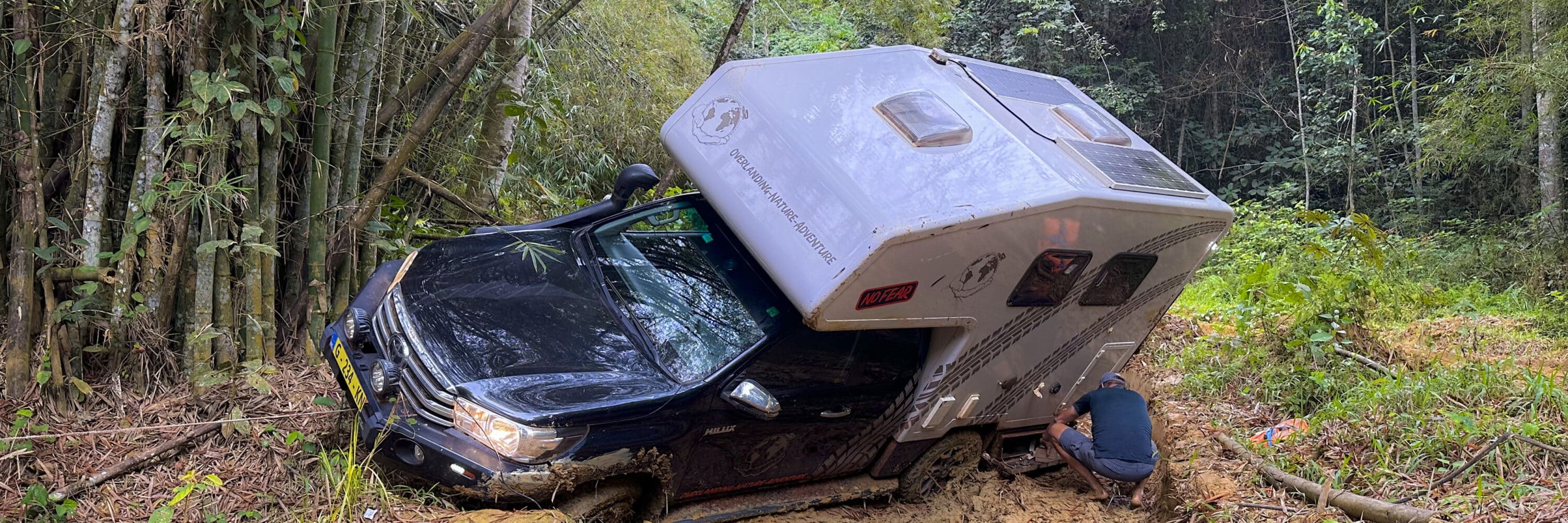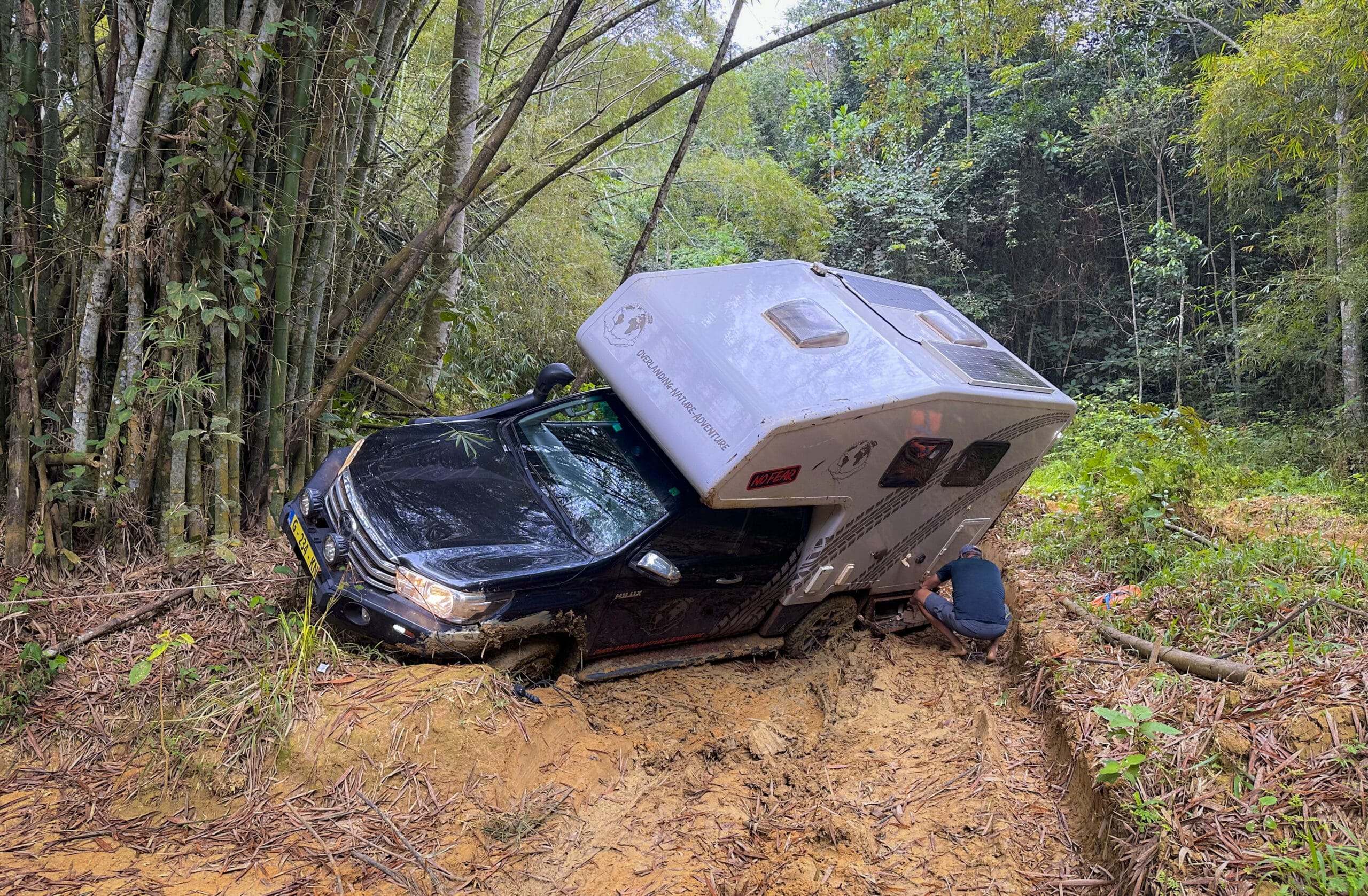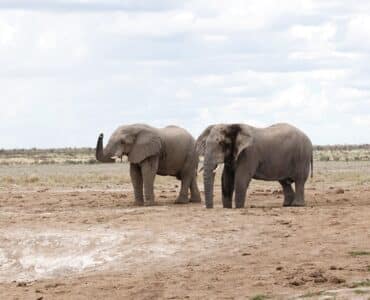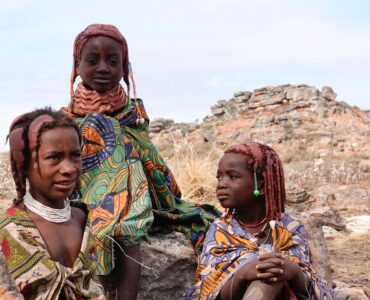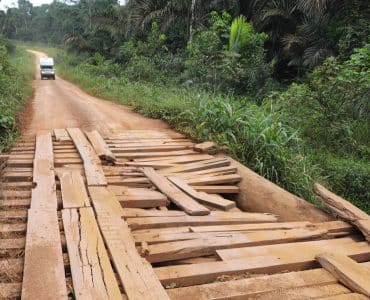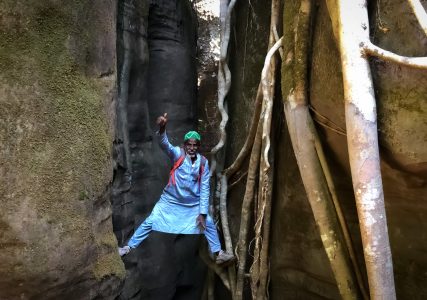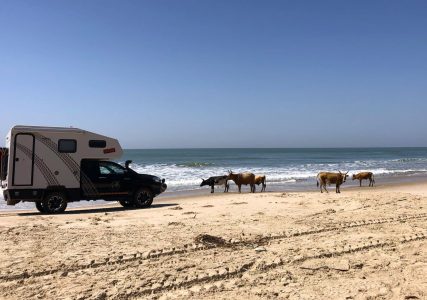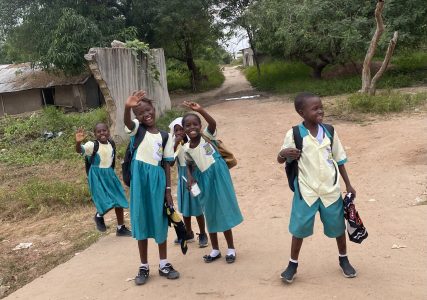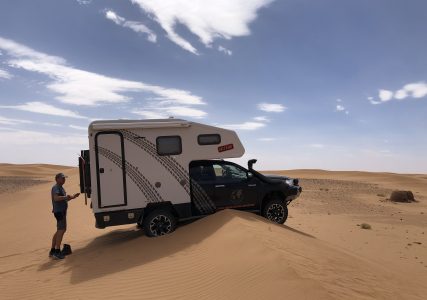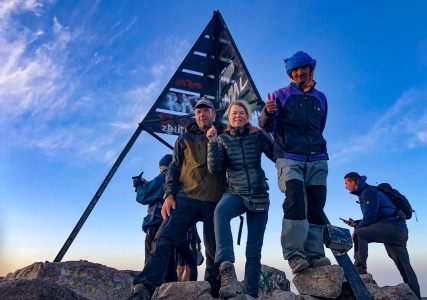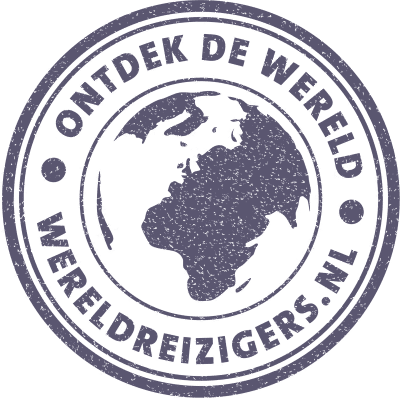Overlanding in Congo-Brazzaville. We (Cor and Grietje from NoFear Travel), travel with our Toyota Hilux 4×4 camper by Africa. The African continent is the Mecca for 'overlanding' with many challenging routes and beautiful destinations. The first African country we visited during our trip to South Africa is Morocco, followed by Mauritania, Senegal, Guinea, Sierra Leone, Liberia, Ivory Coast en Ghana. After a stopover in the Netherlands, we continue our overland journey through Africa. We drove on Togo, Benin, Nigeria, Cameroon en Gabon and have now arrived in Congo-Brazzaville. You can read all about it in this article.
As you are used to from us, you now start watching the video again.
Plan your holiday to Africa here
- Itineraries you can compare + request quotes Africaplus, Africa tailor-made, Djoser, king monkey, rickshaw travel, sawadee en shoestring.
- Flight tickets for Africa you book through Skyscanner.
- Hostels, Hotels and Resorts in Africa you book Booking.com.
- Rental cars : Sunnycars en rental cars.
- Tours and Activities in Africa you book through GetYourGuide.
- travel items such as suitcases, bags and more you can buy at Bol.com.
- SIM cards for Africa you buy extra International sim.
- Parking at the airport you can arrange via Parkos, park care of iParking.
About Congo-Brazzaville
Before we cross the border from Gabon, we once again looked into the two Congos. There is an RDC (Republic Democratic of the Congo) and DRC (Democratic Republic of the Congo). Names that suggest that the two countries have something in common, but that is hardly the case.
The two countries are often kept apart by their names the capitals to add to it. So Congo-Brazzaville en Congo-Kinshasa. We first go to its little friendly brother: Congo Brazzaville!
The country is inhabited by about 4 million people, most of whom live in the two major cities, Brazzaville and Pointe-Noir. The area is comparable to 8 times the size of the Netherlands, making it a sparsely populated country.
Also read: Worldly | How many countries does Africa have? List of countries + population
Border crossing Gabon – Congo-Brazzaville
The stamping out on the Gabonese side goes very smoothly and efficiently. The stamps for Congo Brazzaville a little slower. We have never seen anyone stare at a passport for so long and write so slowly.
We need five different offices for this. No electricity, no computers…so all passport details have to be written manually in a large book five times. Fortunately, the employees are super friendly and helpful. As long as you keep calm, it is the nicest border yet.
We can also immediately buy a new SIM card at the border.
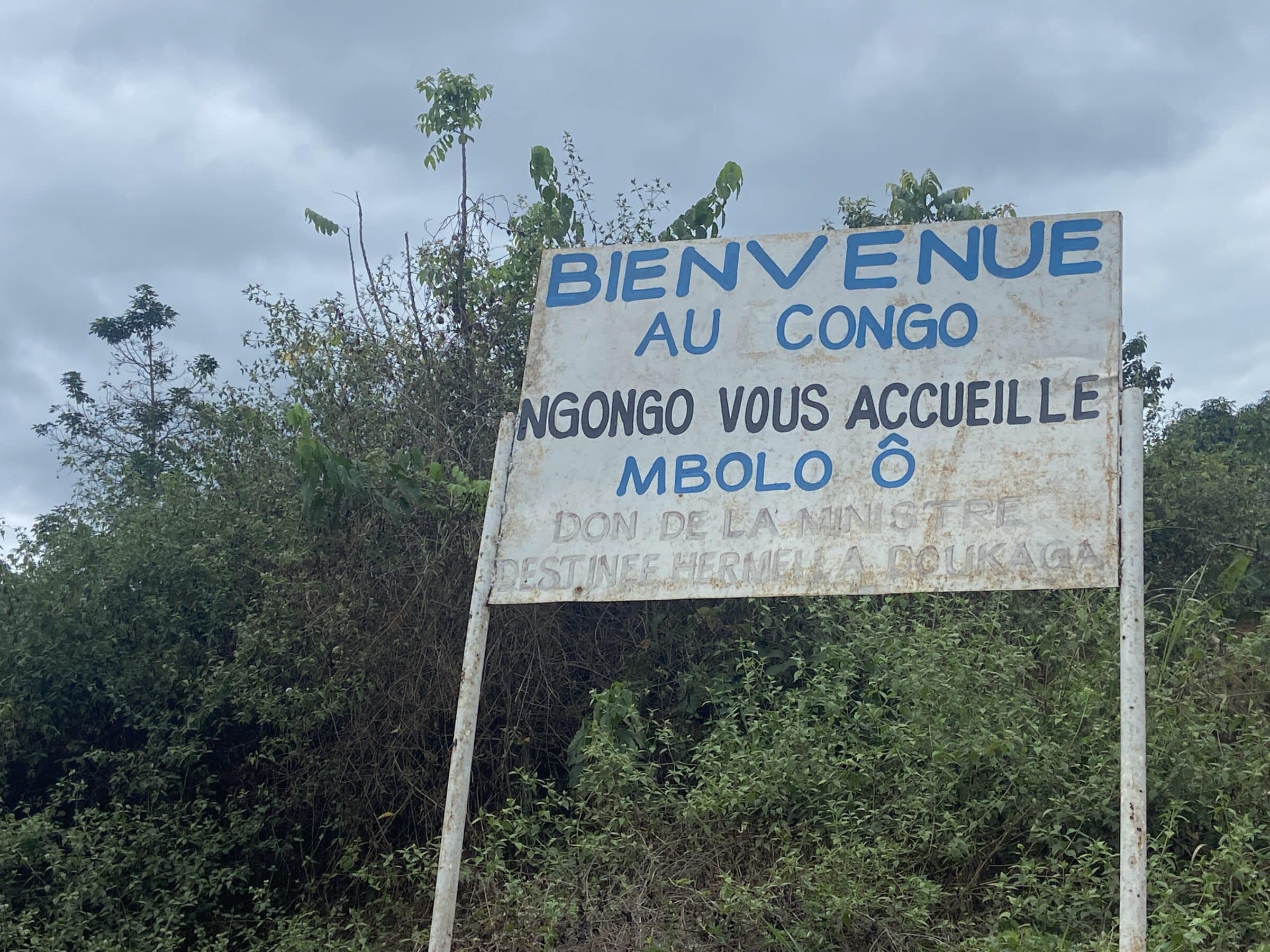
Overlanding in Congo-Brazzaville
The road is primarily a gravel/sand road of varying qualities. It is September 30 and the end of the dry season. Everyone says the rain is coming. The environment is a variety of views and then some forests. We think it's nice that it is a bit more open again.
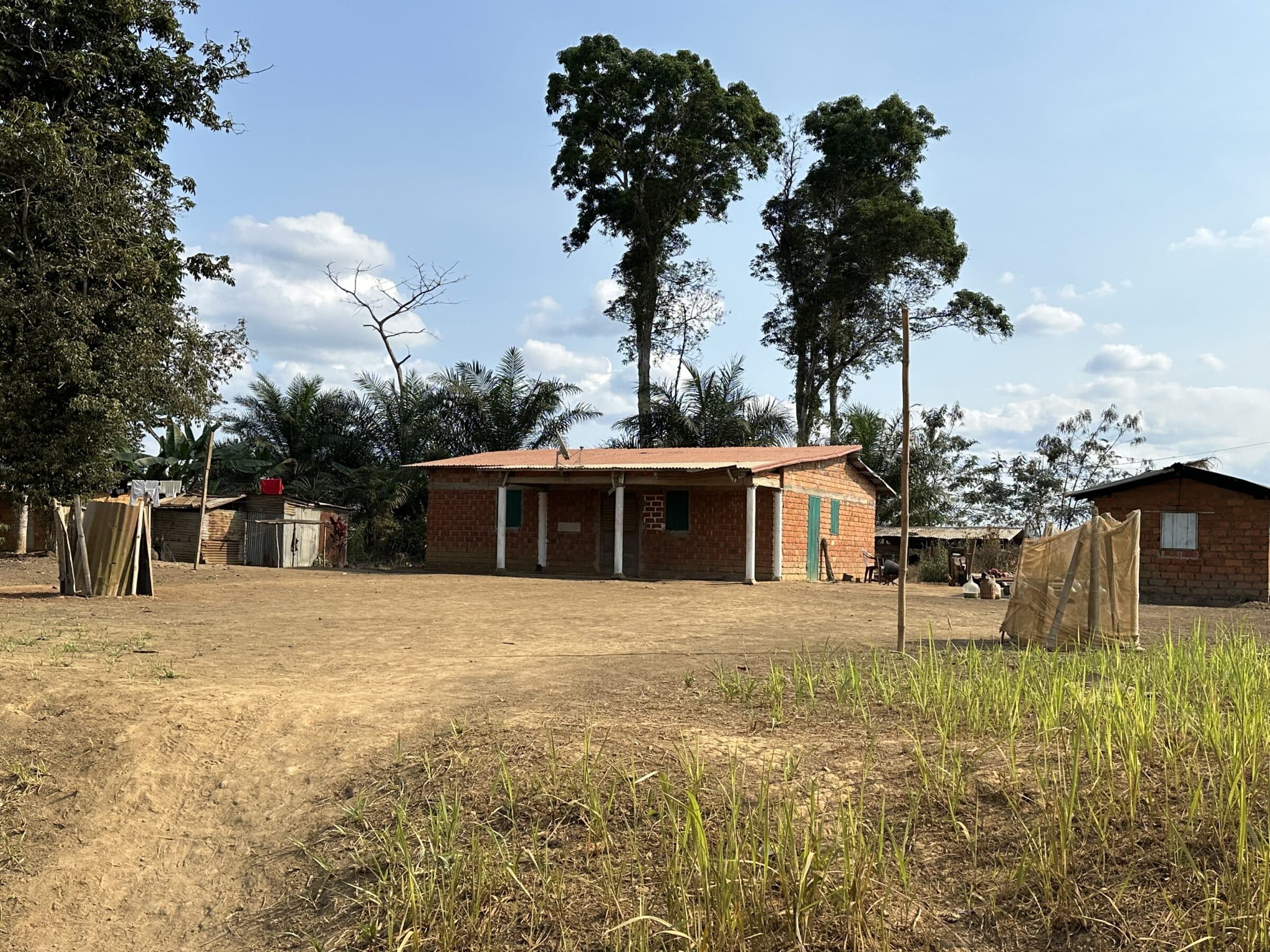
The houses here are made of red brick, a construction that we have not seen before. It is neat around the houses and people wave friendly. We actually feel right at home!
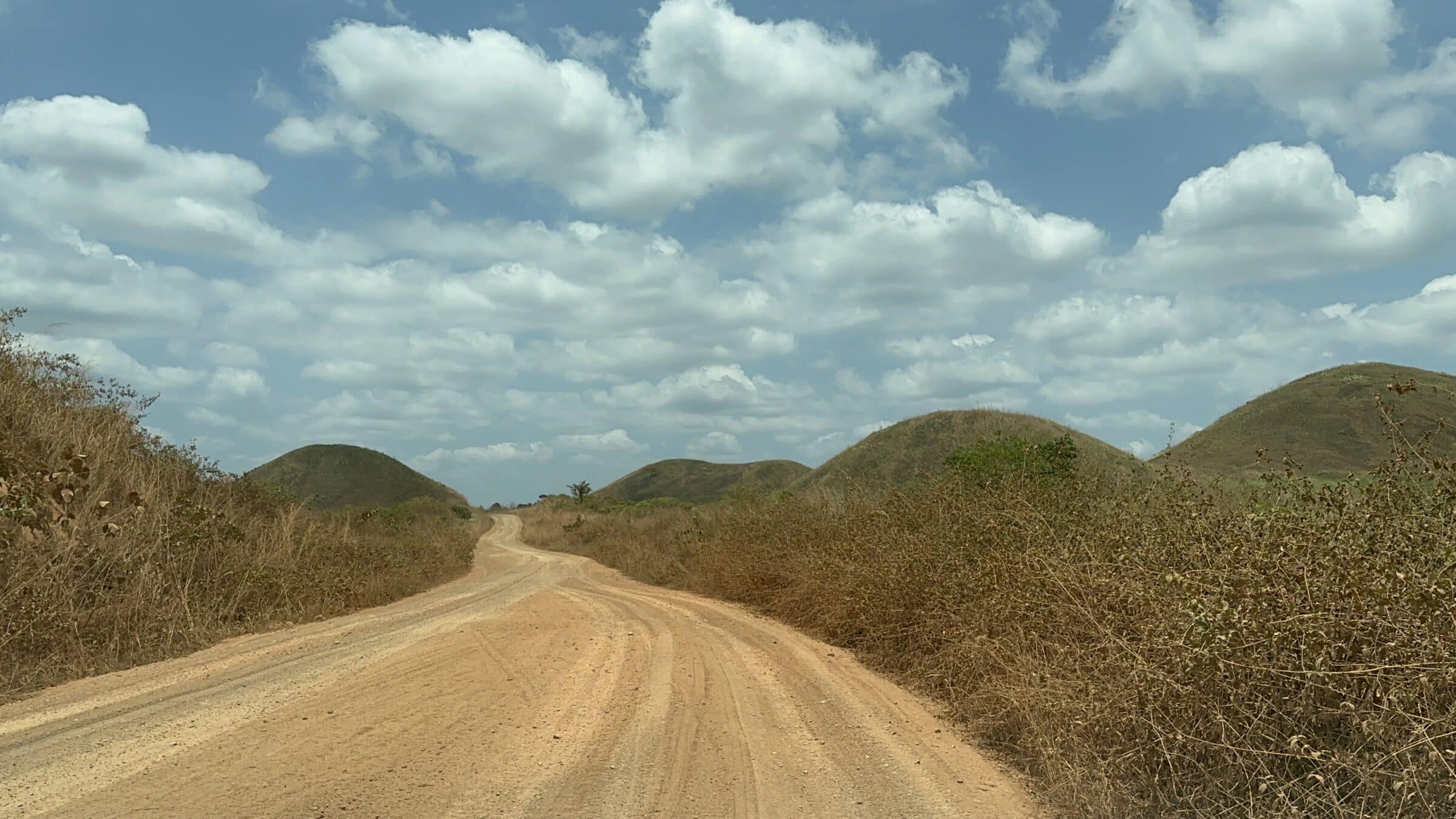
Challenging route through the south
We choose to take a route straight through the south of the country. The digital road maps we use are not always up to date. So we have to rely on the locals to show us the way. That is often the most reliable! The roads here are also of varying quality. Sometimes a flat gravel road, sometimes challenging slopes.
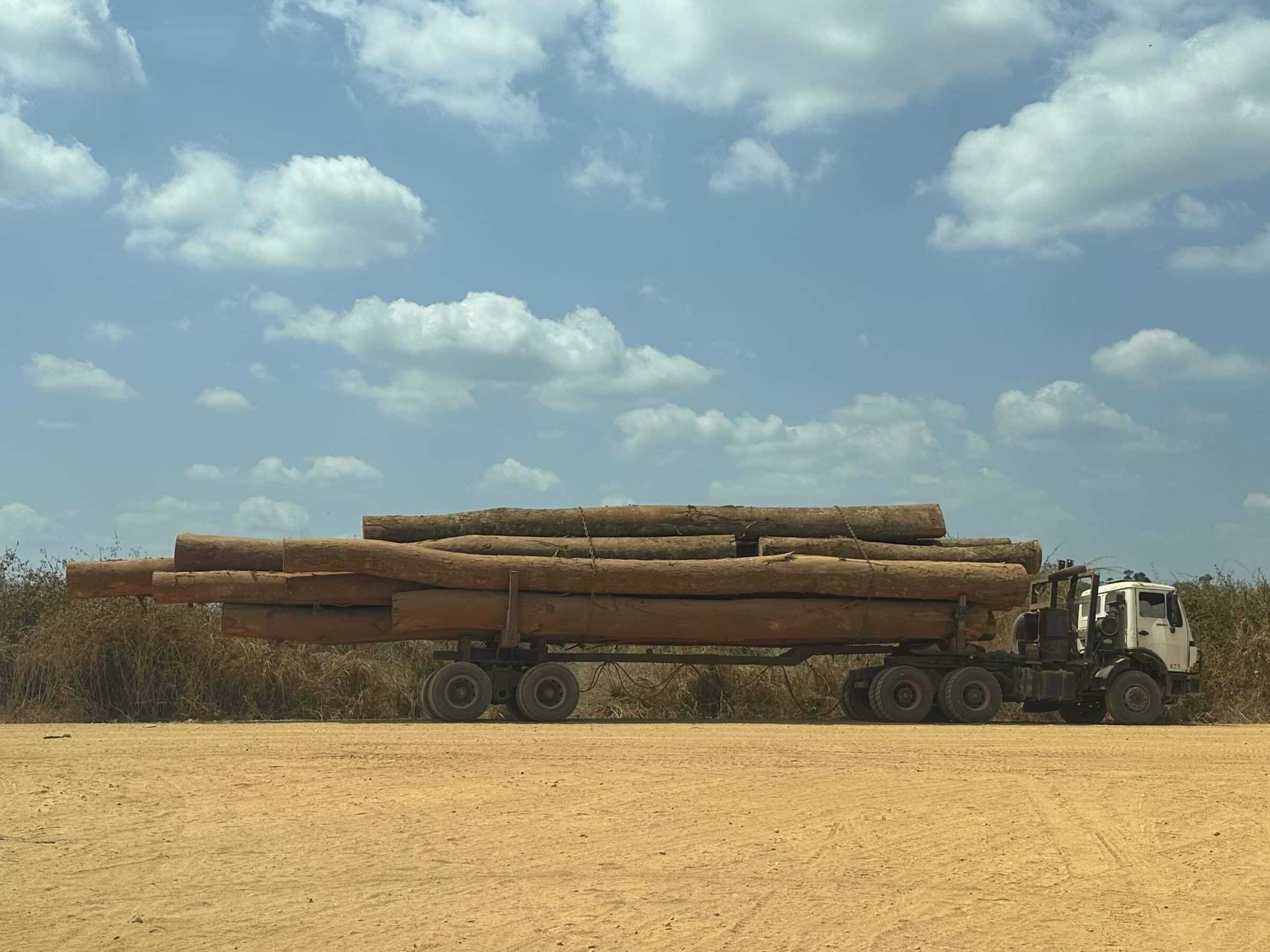
Along the way we pass many tiny villages. Very remote, no cars, hardly any mopeds and many women with heavy baskets on their backs that serve as the only means of transport.
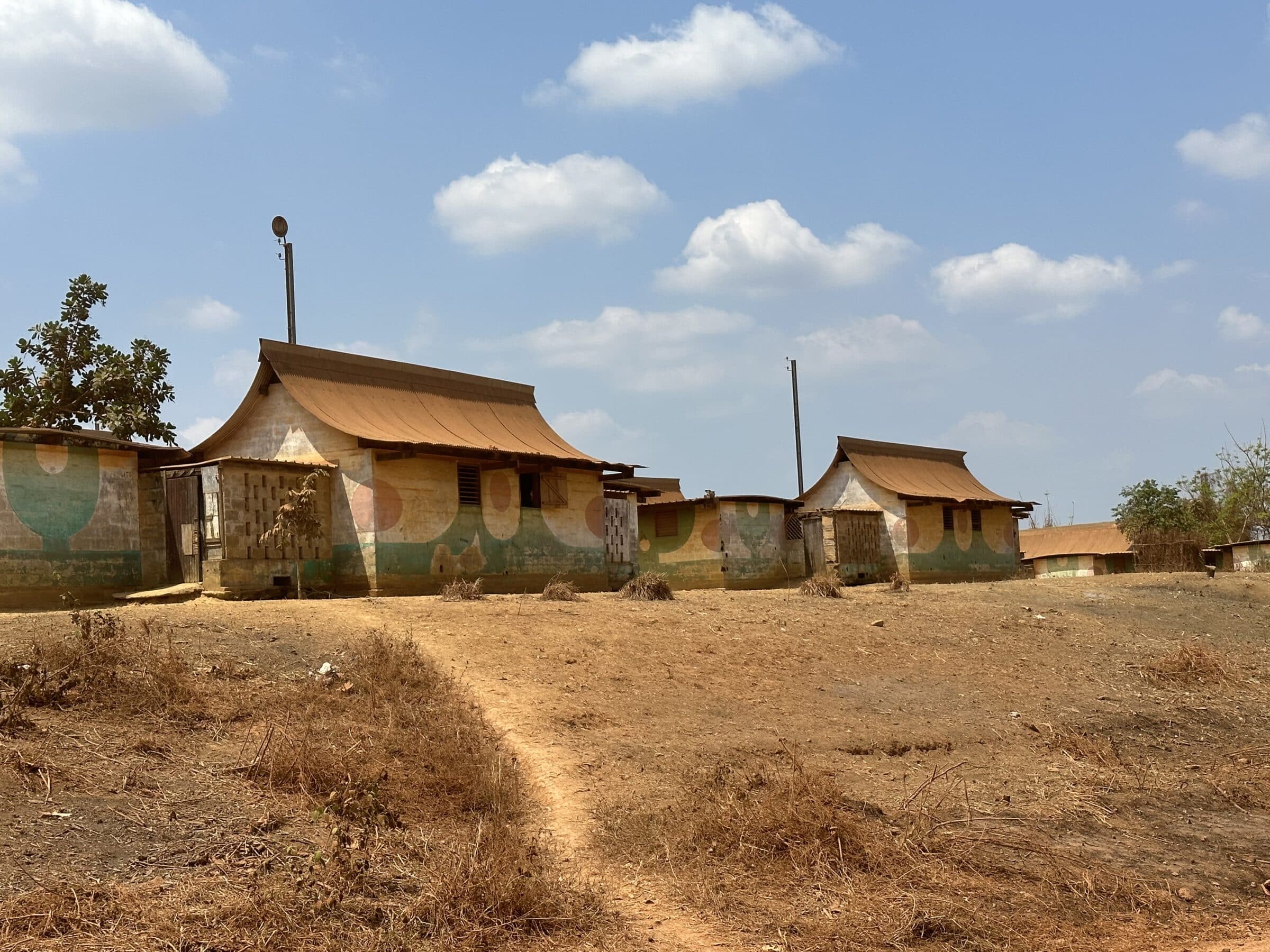
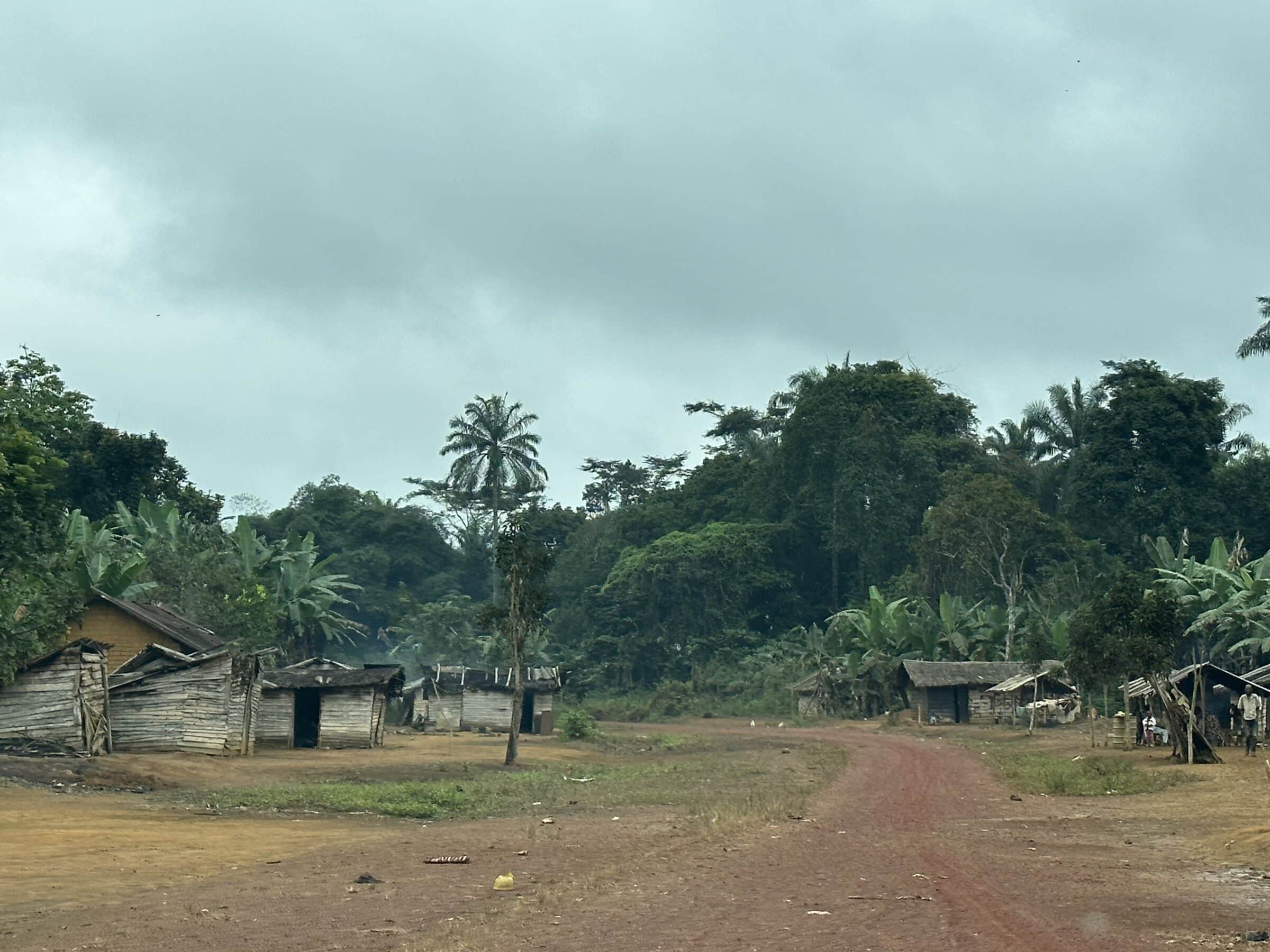
Again, the people are sooo friendly! We drink coffee in the middle of the jungle or on a bridge while a fisherman sails beneath us with his pirogue. We swim and wash in rivers and have the greatest fun.
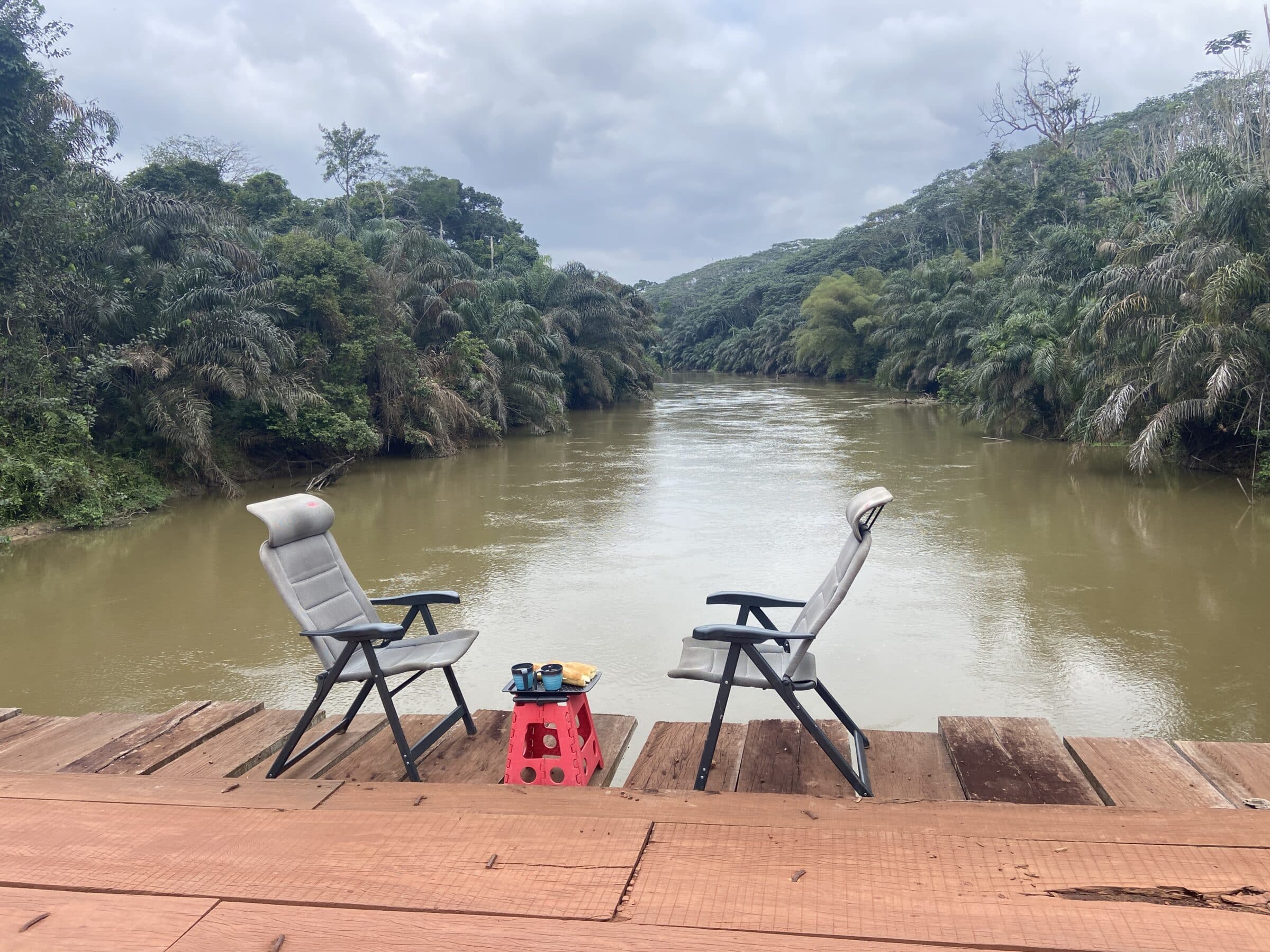
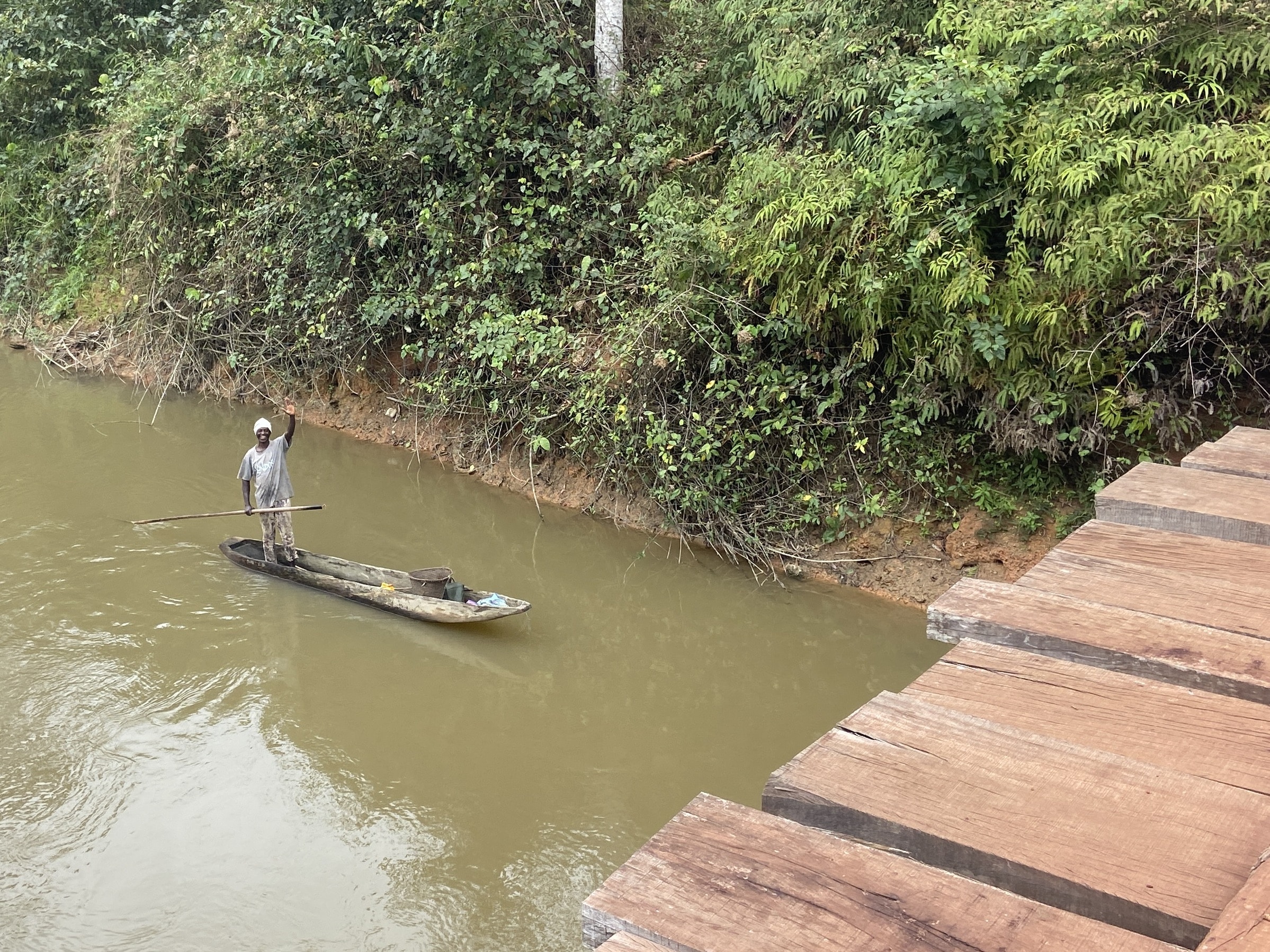
The landscapes vary, from dense jungle to hilly with beautiful views. Yes, this part of Congo Brazzaville stole our hearts.
We spend the night in various places, but it is not always easy to find a place in time. One time we really couldn't find anything while it was getting dark in the middle of the jungle on a single-lane road. Lots of overhanging branches and a track 2.0!
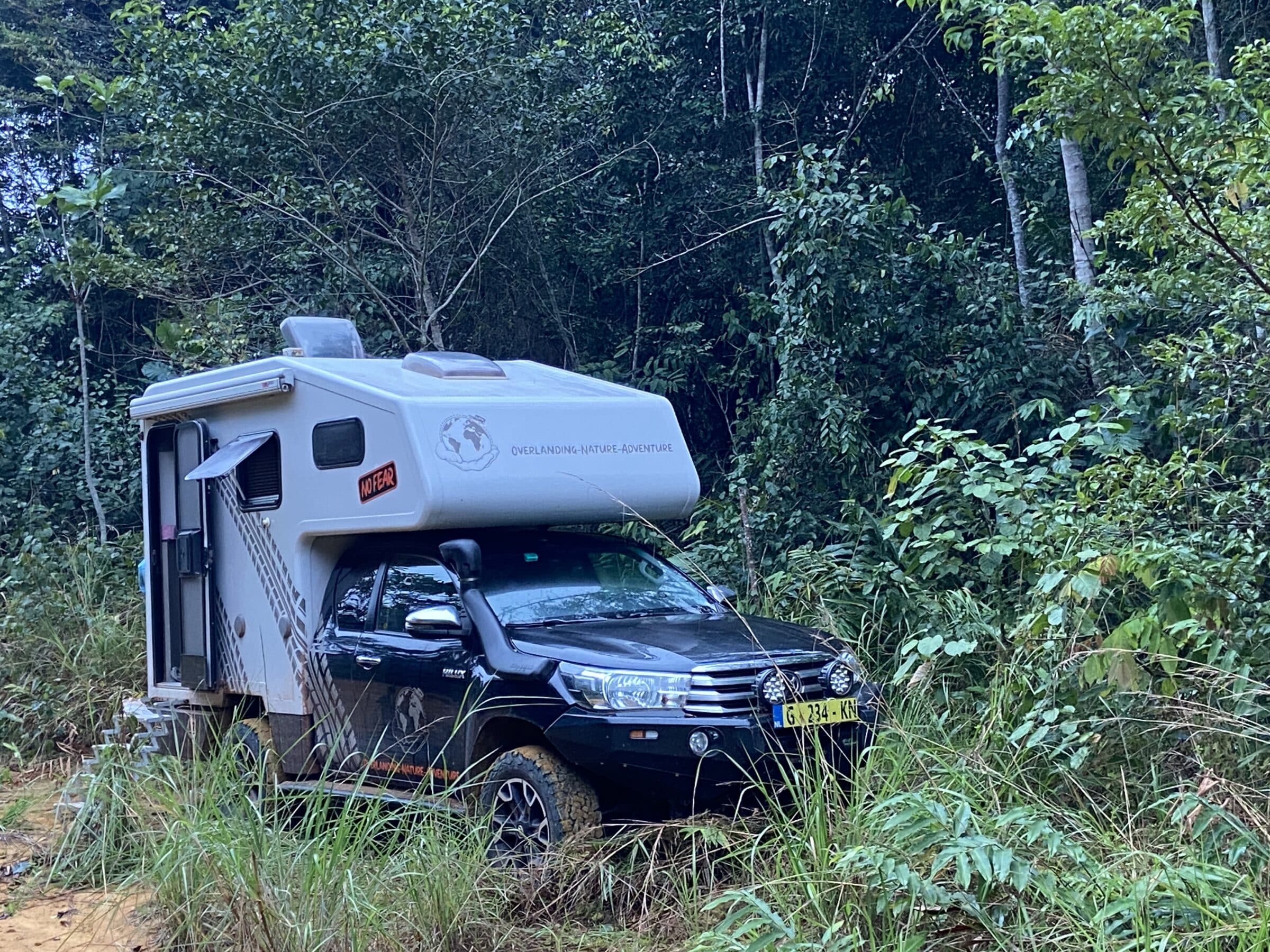
Until we can park in a tiny cove. Fortunately, because just as we have parked a big thunderstorm breaks out. We have a wonderfully quiet night amidst jungle sounds.
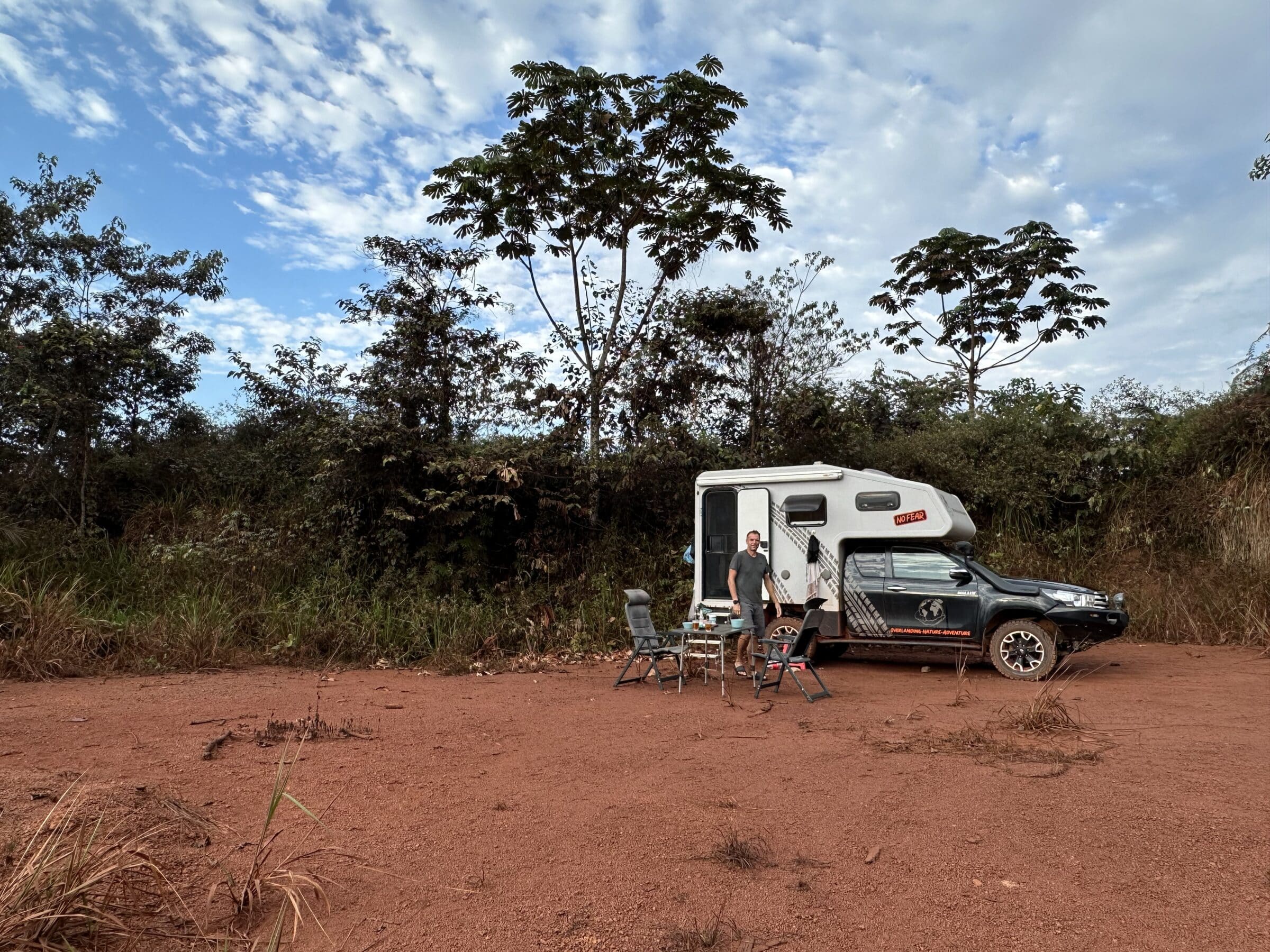
And then Tuesday, October 3
(literally from our diary)
A dark day that still ended well!
We continue our way towards Zanaga. The road is narrow with a number of mud holes. We pass the first without any problems, but the second becomes a “nightmare”.
We try to stay on the track, but the car quickly and unexpectedly pulls to one side on an elevation. He doesn't sink back into the track and the result is that we lie on the side. Major catastrophe, end of adventure, many thoughts go through our minds.
We can climb out of the car through the side window. We're not hurt!
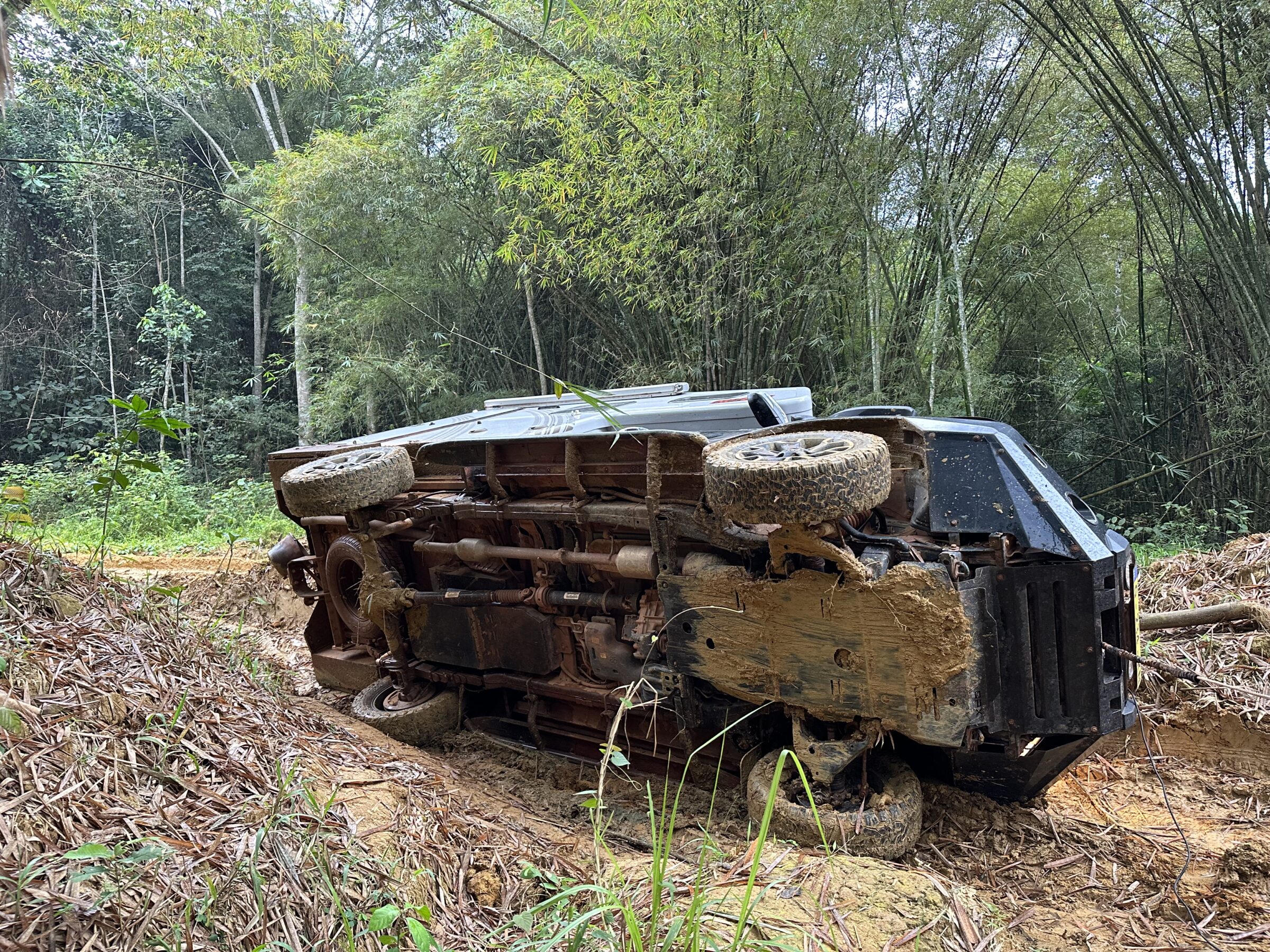
There you are in the middle of nowhere, with your camper, your house on wheels, lying on its side. The lack of fresh tracks indicates that no one has been here for a few days, perhaps only a moped.
We're trying to come up with a plan and calm down at the same time.
After a while we use the winch to get the camper halfway upright again. But he can also fall over again...
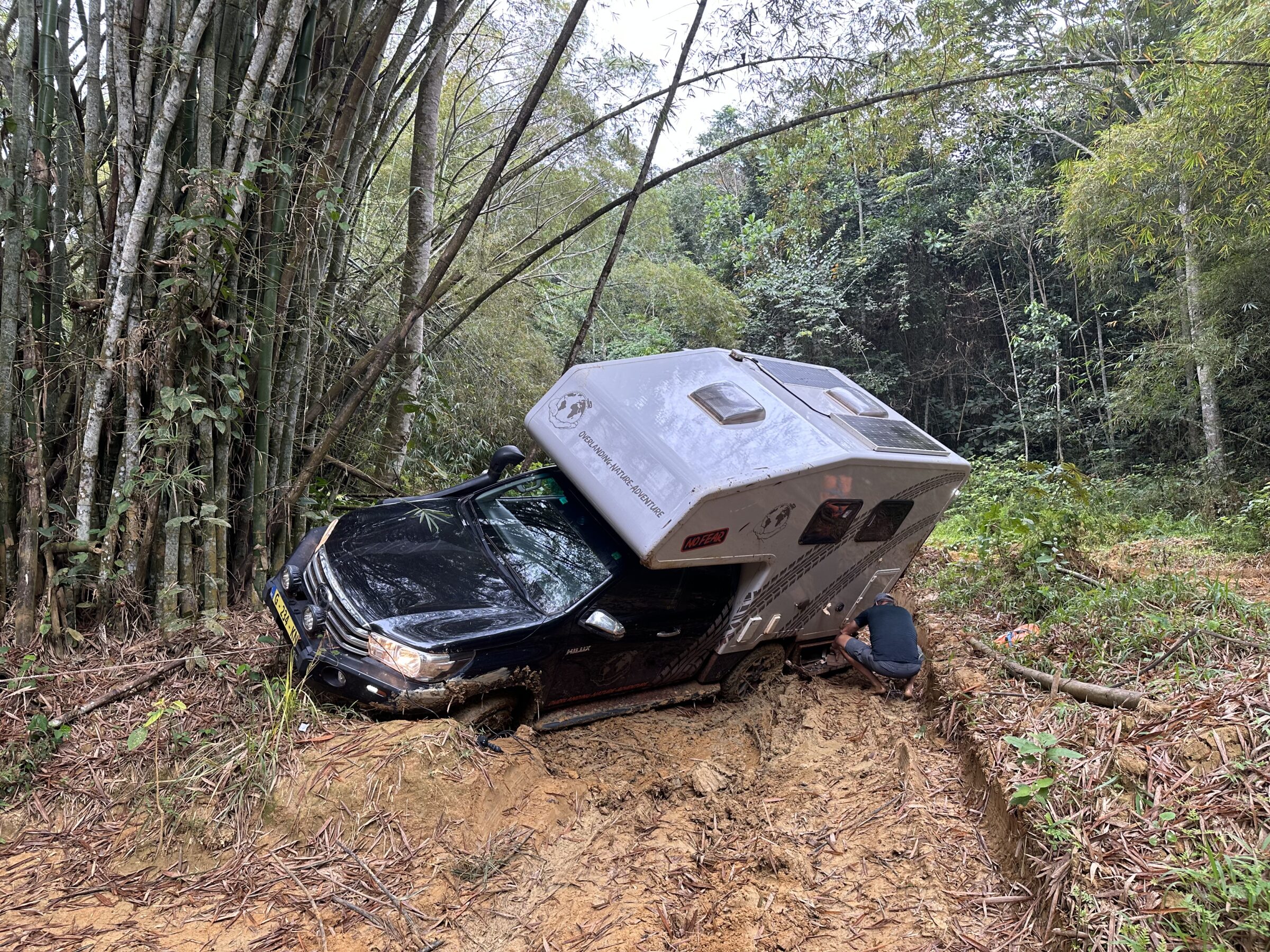
After an hour of slogging the possible solution comes: a boy on a moped. We explain in our best French that we need help. Shovels, axes and lots of manpower. Cor goes along on the back of the moped to the village (7 km) and we explain the situation to the village head. He mobilizes about 10-12 men who all come back to help.
There is work, toil, digging and chopping.
We get hope. Together with the winch and manpower we get the camper back on four wheels.
We can assess the damage and it seems not too bad. The left front tire is flat and we replace it with the spare wheel.
We can drive again! Tears of joy.
We are eternally grateful to the men and give a generous tip, which produces an almost deafening applause.
Everything is dirty with sticky clay mud.
We drive on to Zanaga and are stopped by the police. A nice man who goes through the papers and then sends us to the gendarmerie and immigration.
These gentlemen sit down and check everything meticulously. The camper is also scrutinized in every corner. They think that we do not have a good stamp in our “yellow book” and want us to pay a fine. So a rip off.
After so much bad luck (and luck), that is still possible...
It makes Grietje angry and emotional. And then the gentlemen suddenly decide to waive a fine and we can continue on our way.
After the village there is a river where we wash the car and clean up all the rubbish. We discover some scratches on the side. But there does not appear to be any further damage. We breathe a huge sigh of relief! This could all have ended very differently!
On to Brazzaville
When we arrive at the next village, the highest police chief tells us that it is impossible for us to take the route we suggested. The road would be impassable due to “erosion”. The only option is the shortest route to Brazzaville, another 400 kilometers.
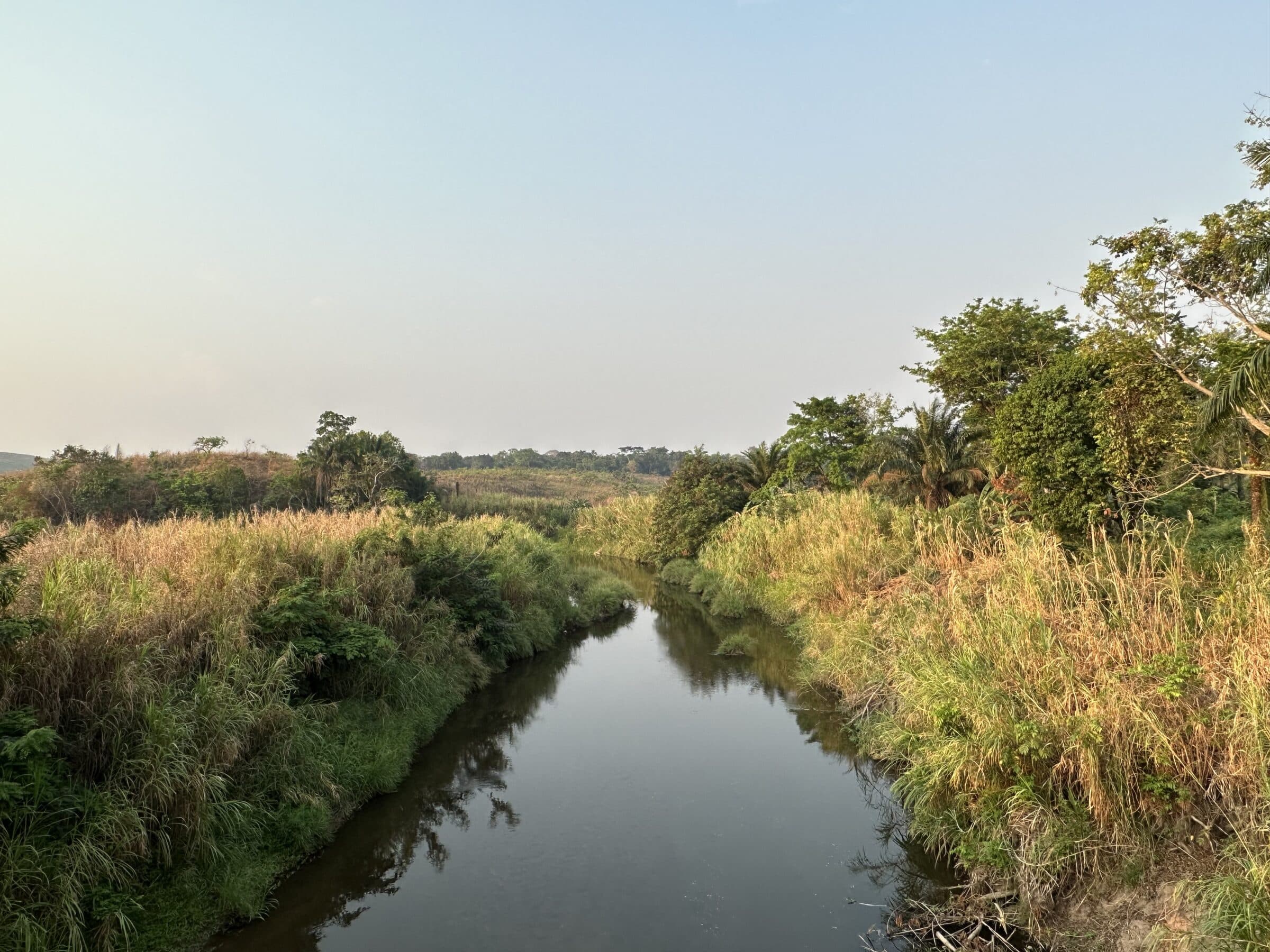
The tennis club in Brazzaville
In Brazzaville we spend a few days at the local tennis club. It is the place where we have been seeing white people again for weeks. The managers are a very friendly Portuguese/Angolan couple.
The complex includes a large car park, tennis courts, swimming pool, restaurant, showers and western toilets…and all super clean. Unbelievable, but we can stay here for free. We'll hold on here for a while!
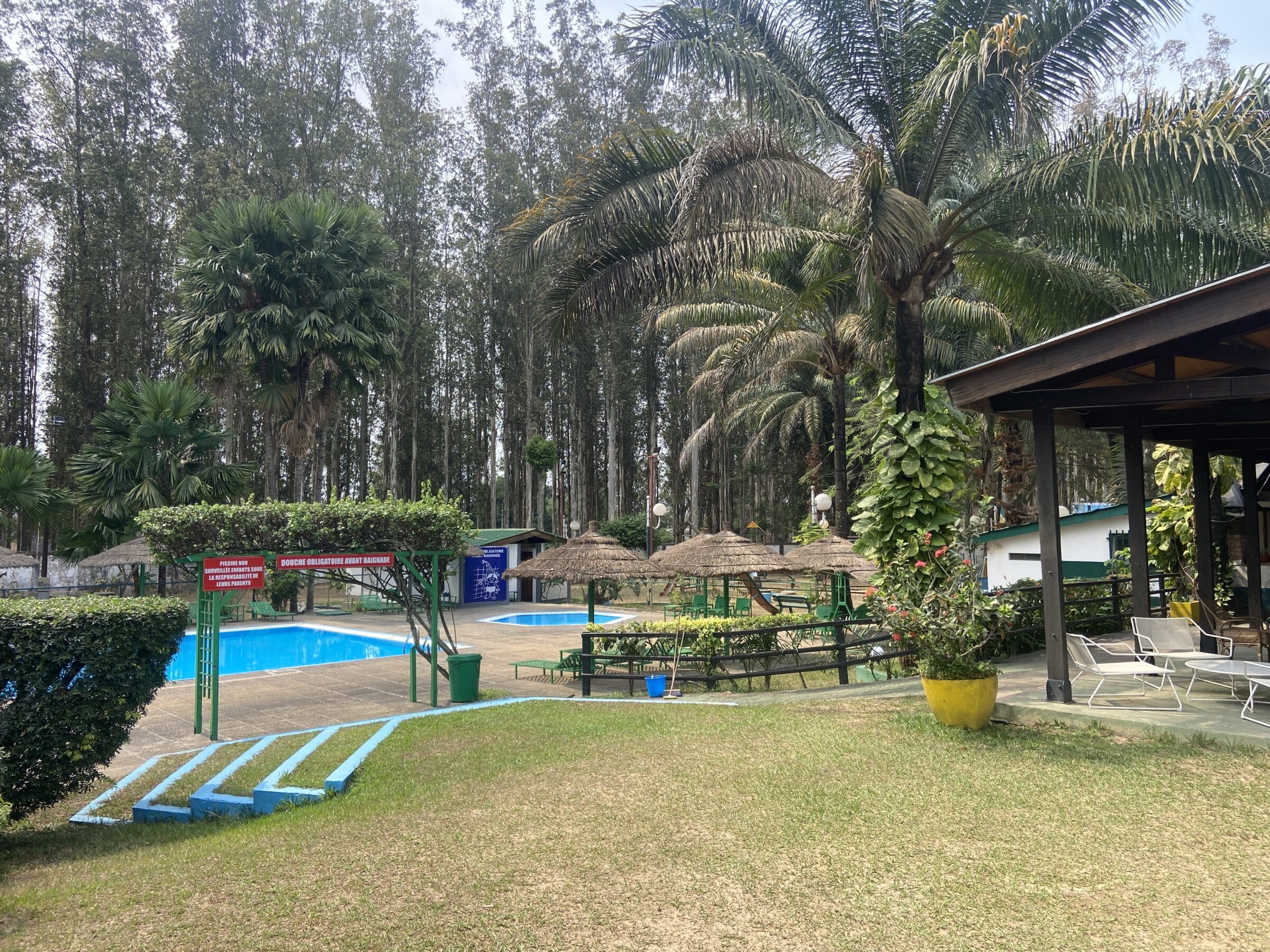
We meet several - mostly French - expats there. They love the stories about our trip and we love their stories about what it is like to live as a Westerner in a country like Congo.
The tennis club is a unique place, not only for a game of tennis but certainly for "socializing" with - most - white people. We are invited to the home of a French couple to do our laundry while we also enjoy a delicious lunch.
From this otherwise quiet place we take a taxi a few times to explore the city.
Brazzaville and the Congo River
Brazzaville is located on the mighty Congo River. With around 650.000 inhabitants, the city is a small village compared to Kinshasa (16 million inhabitants) on the other side of the wide river. But it doesn't feel like a village. It actually has everything an African city should have. The roads are neatly paved and there are modern buildings. There is a fair share of residents who are relatively well off, but almost inevitably, a significant share of residents also live below the poverty line. The atmosphere of the city located on the Congo River is relaxed and the boulevard, which is closed to motorized traffic on Sundays, has a number of nice entertainment venues.
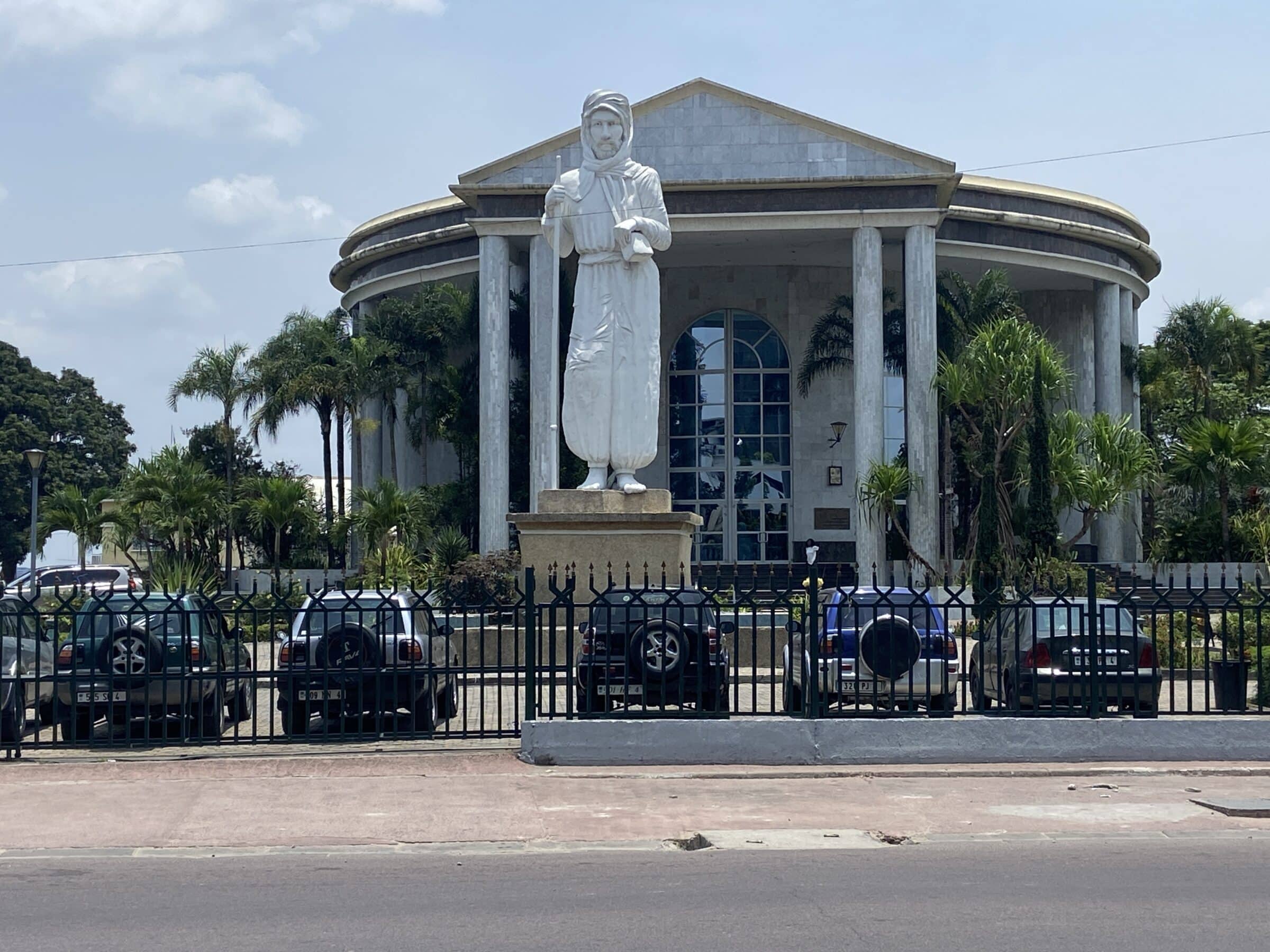
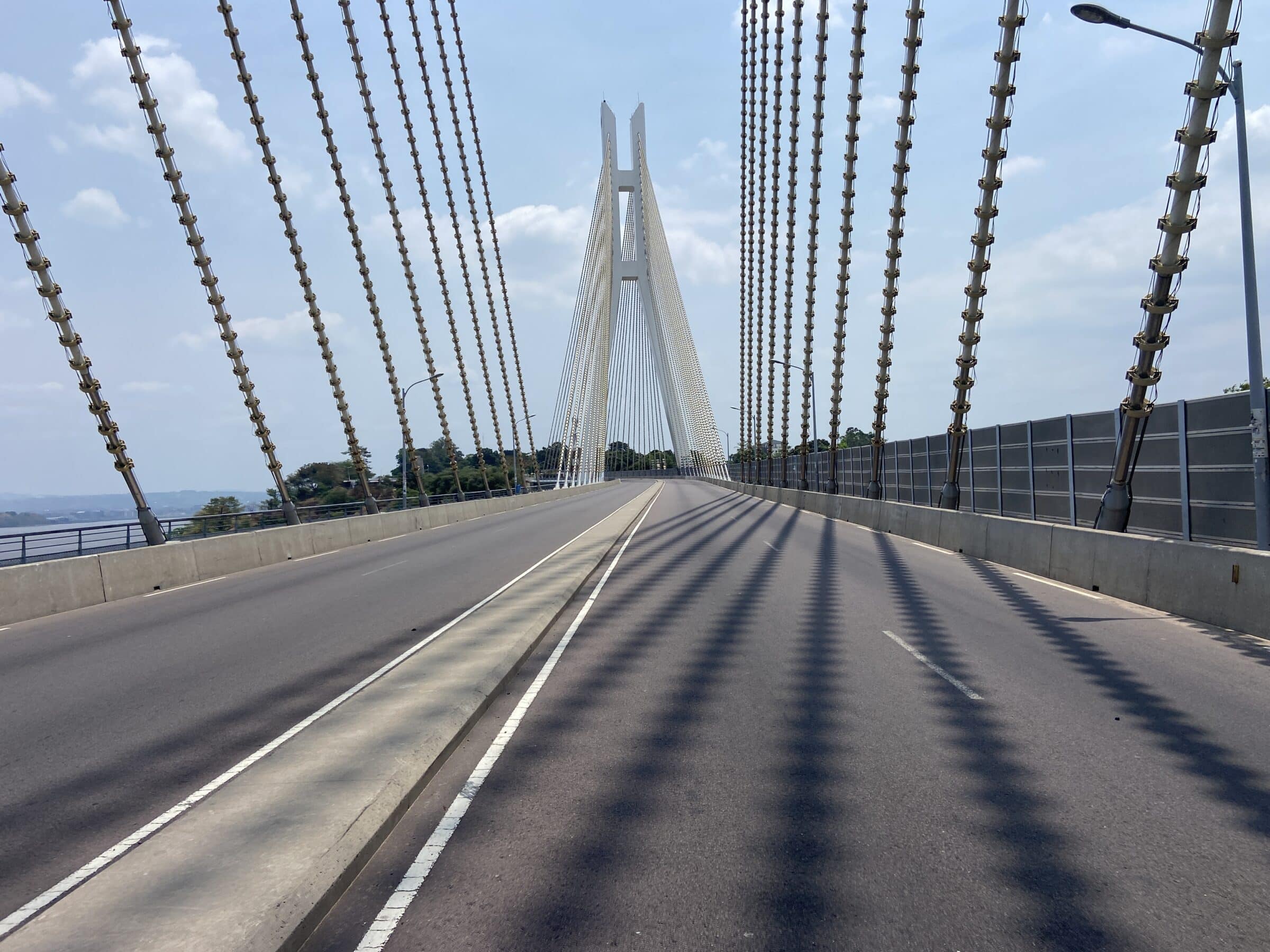
At almost 4400 kilometers, the mighty Congo is the longest river in Africa after the Nile. There are a number of rapids near Brazzaville, which are spectacular to see from the boulevard.
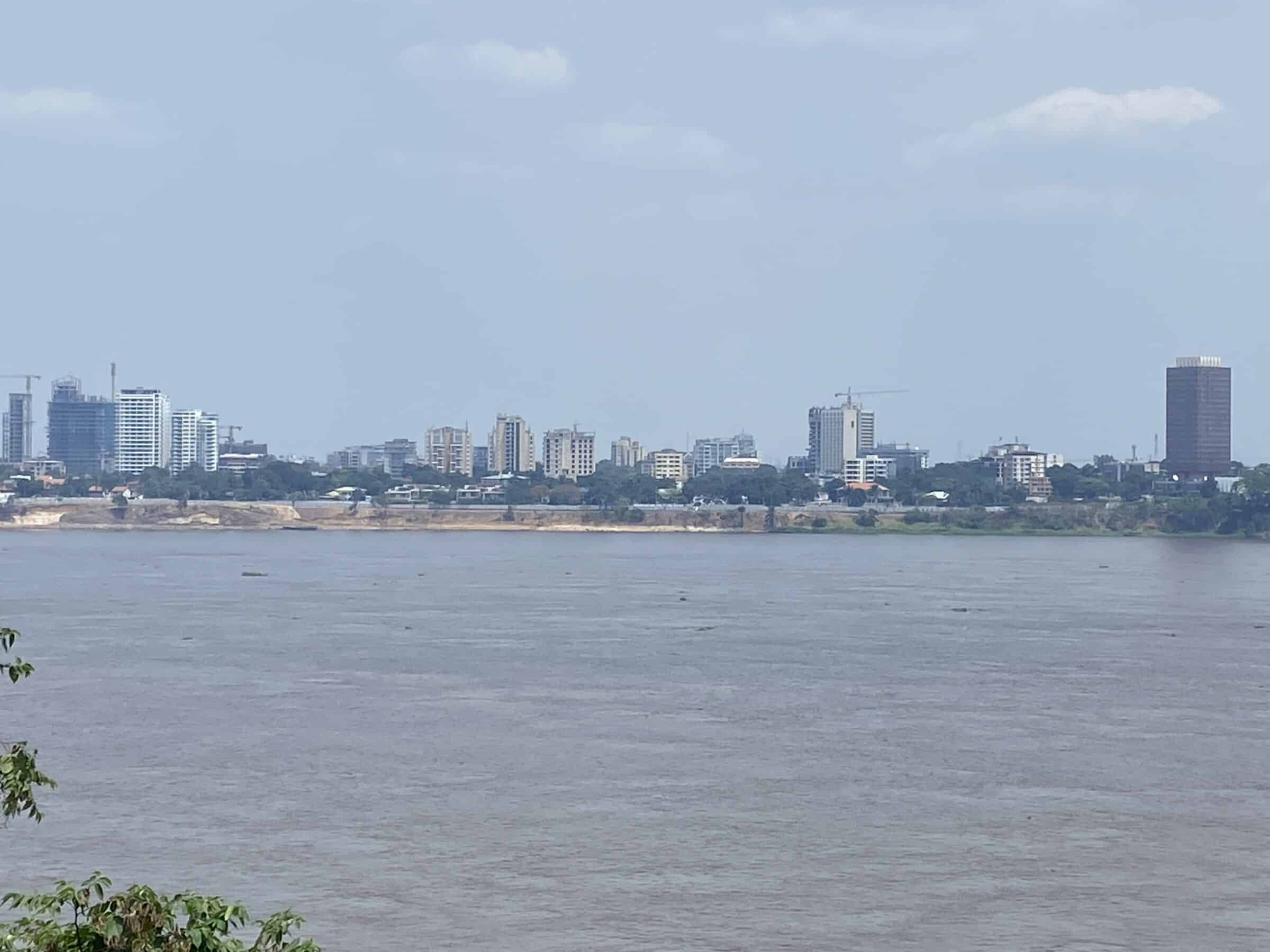
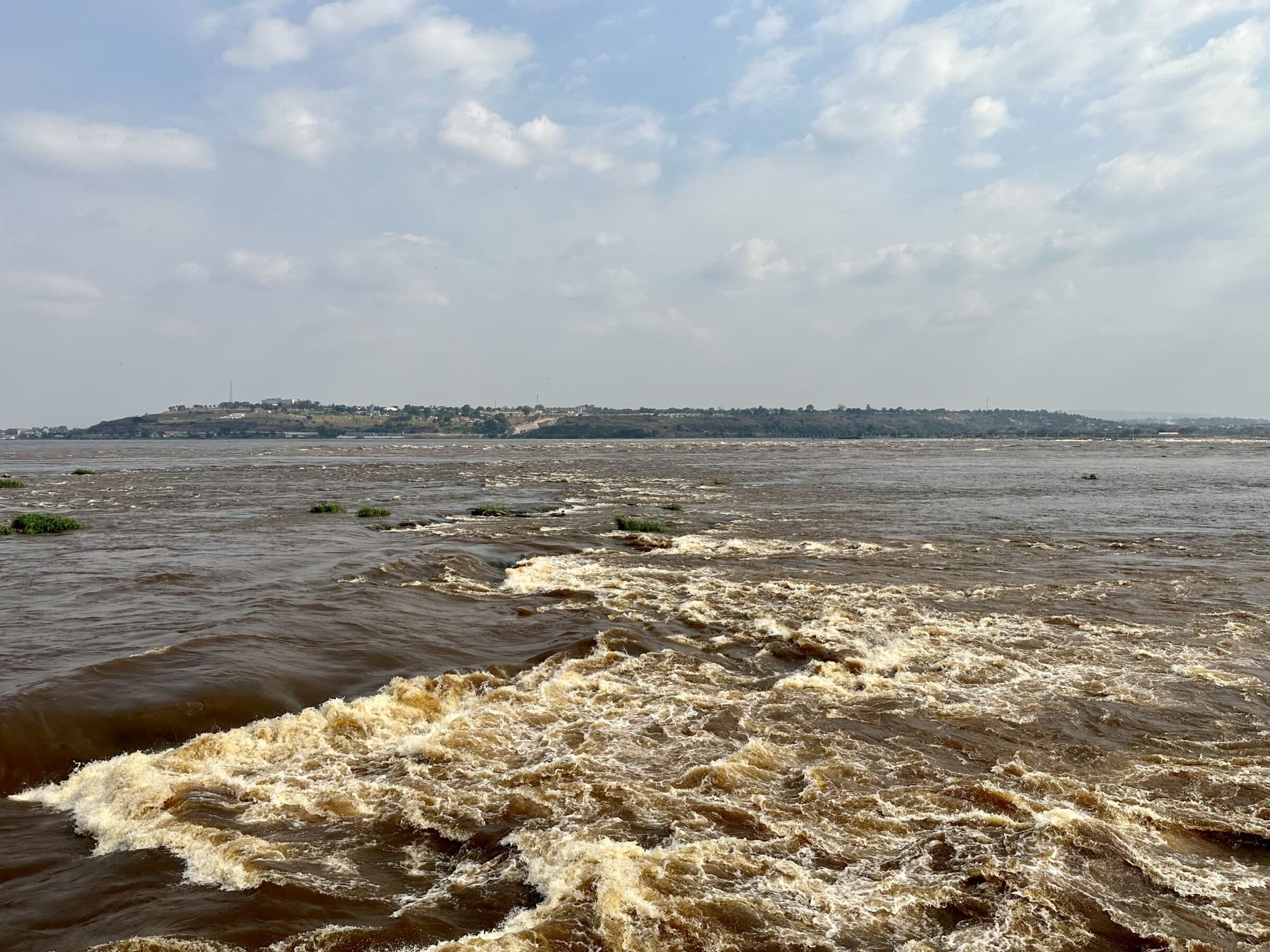
Gorillas in Lesio-Louna Wild Reserve
This visit is unforgettable! The reserve is located about 150 kilometers north of Brazzaville. From the asphalt road it is another 12 kilometers through a muddy narrow path and then suddenly a fantastic wide landscape.
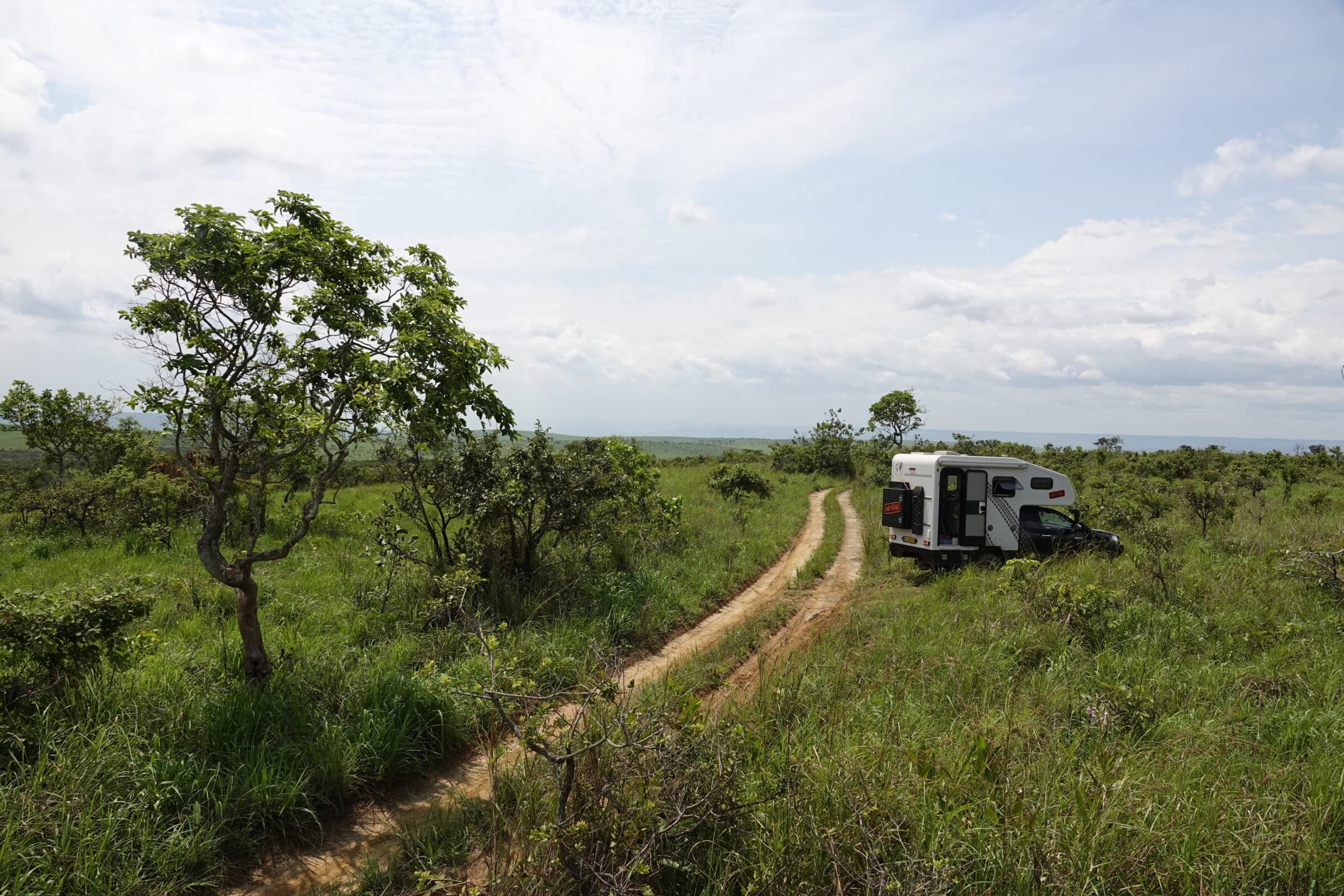
At the entrance along the river we are kindly welcomed by a number of rangers. That same afternoon we take the speedboat up the fairly flowing river.
And don't sail quietly, but hard, hard! With the wind in our hair we go to the first island. One male gorilla lives here.
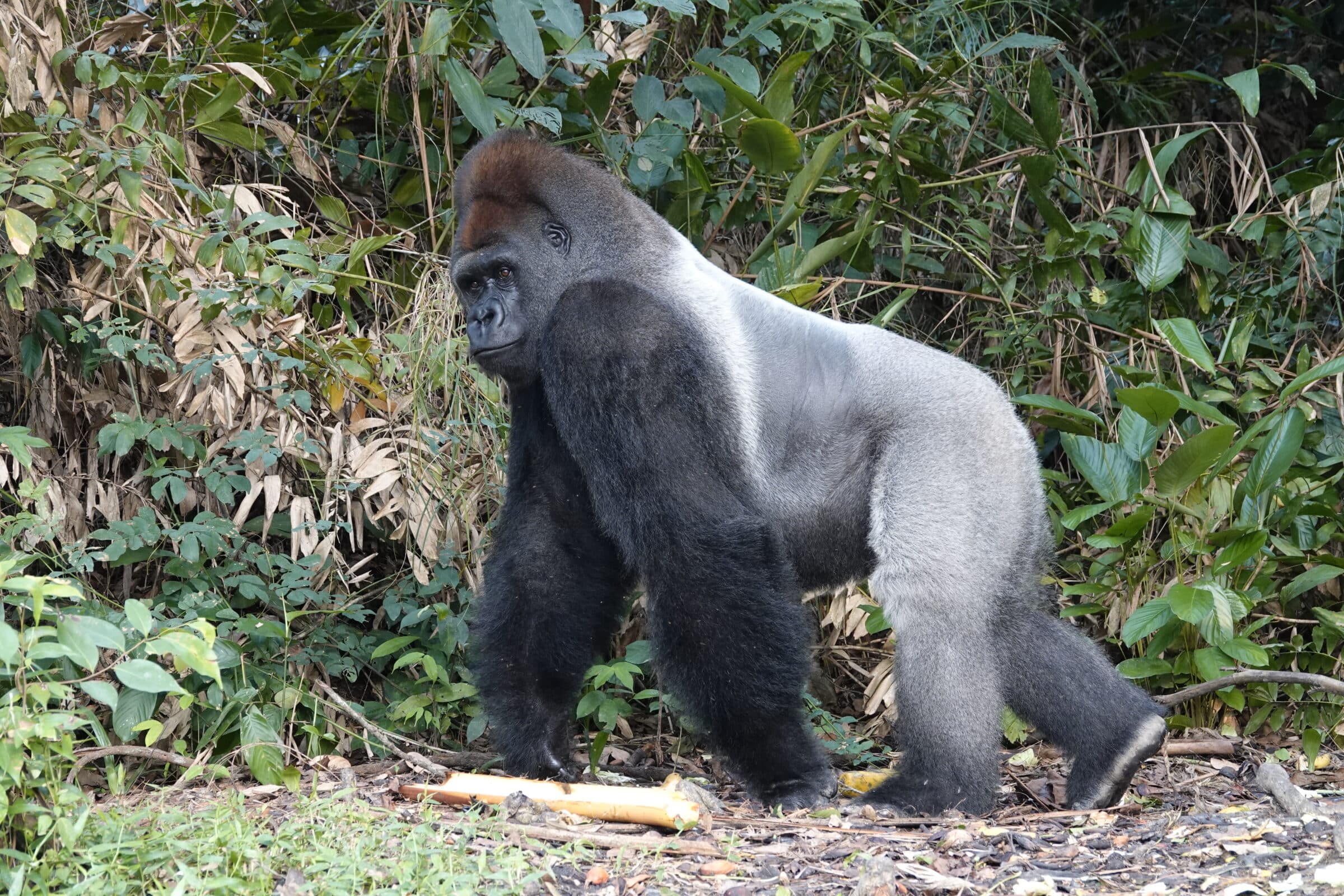
He obviously knows where he is being fed and quickly comes to the right place. A wonderful experience, a little later we are face to face - at three meters, safely in the boat - with the gorilla weighing almost 200 kilos. We watch his actions as he calmly eats his meal of bananas, mangoes and papaya. The similarity with humans is so great! The facial expressions are fantastic.
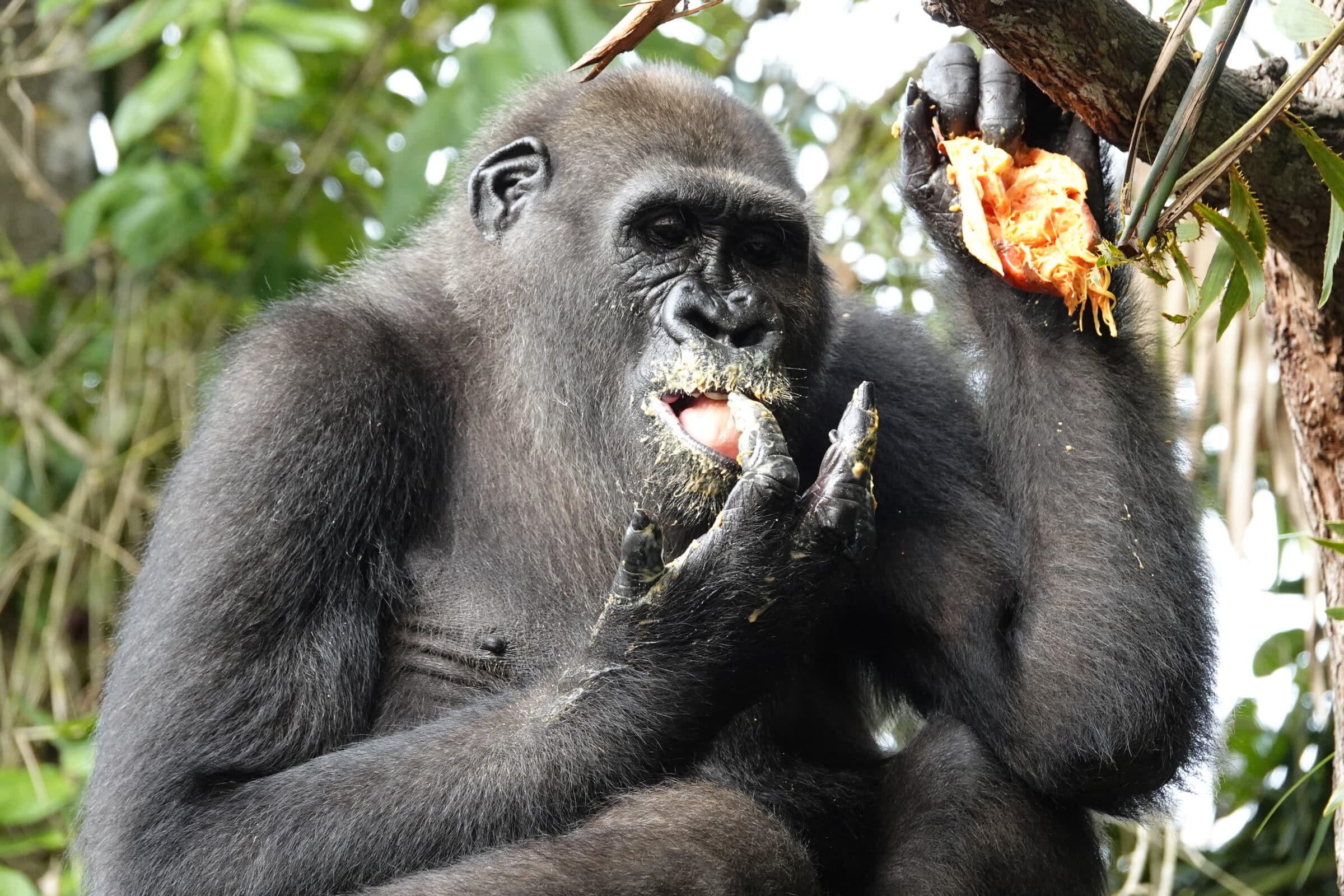
After observing the gorilla for about half an hour, we start the engine and "tear" to the next island in the river, a few kilometers away. Two gorillas live here and get along well together. The youngest, eight years old, was born in an English zoo. Here he is taught to stand on his own two feet so that he can later enter the jungle independently.
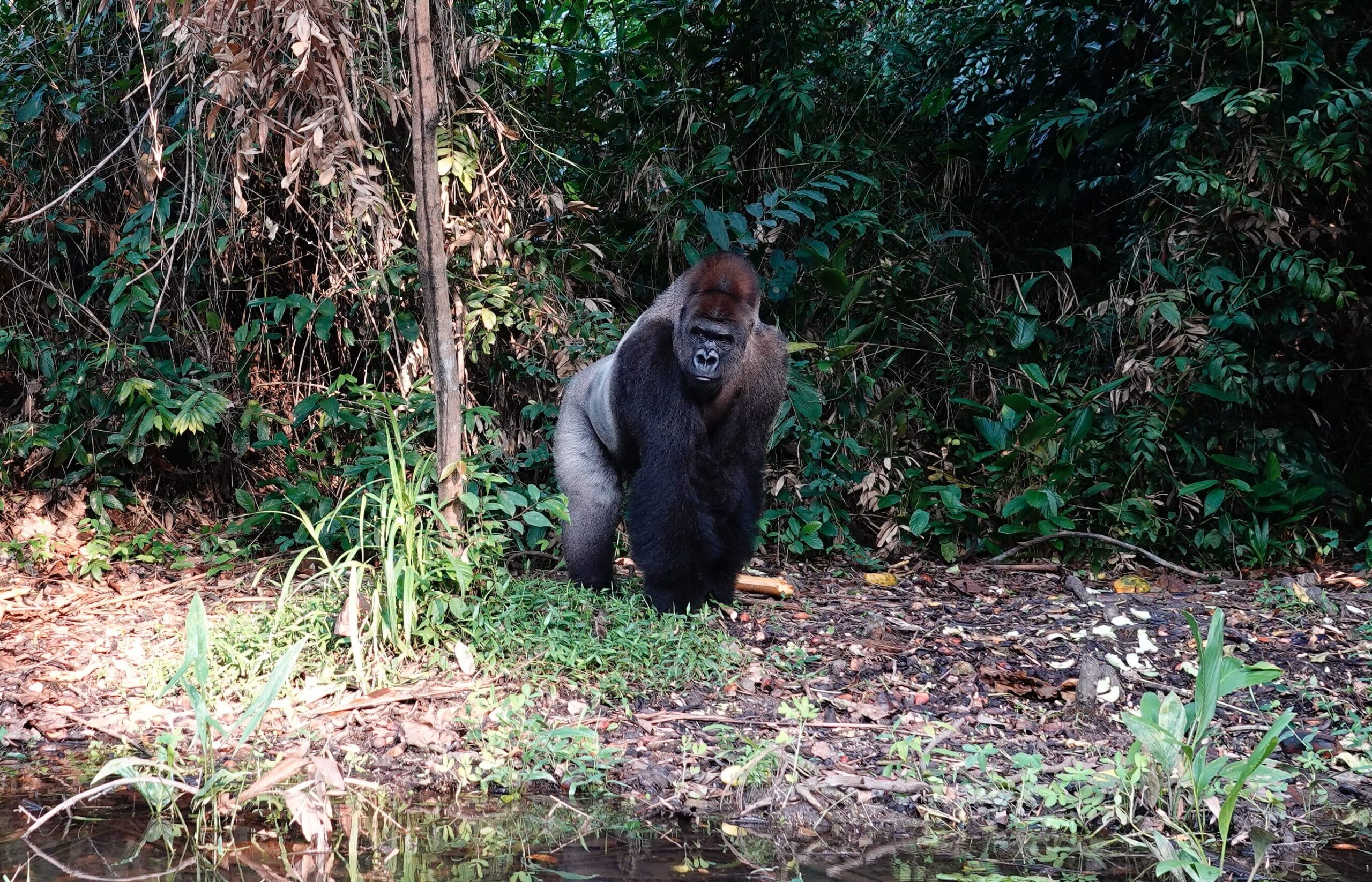
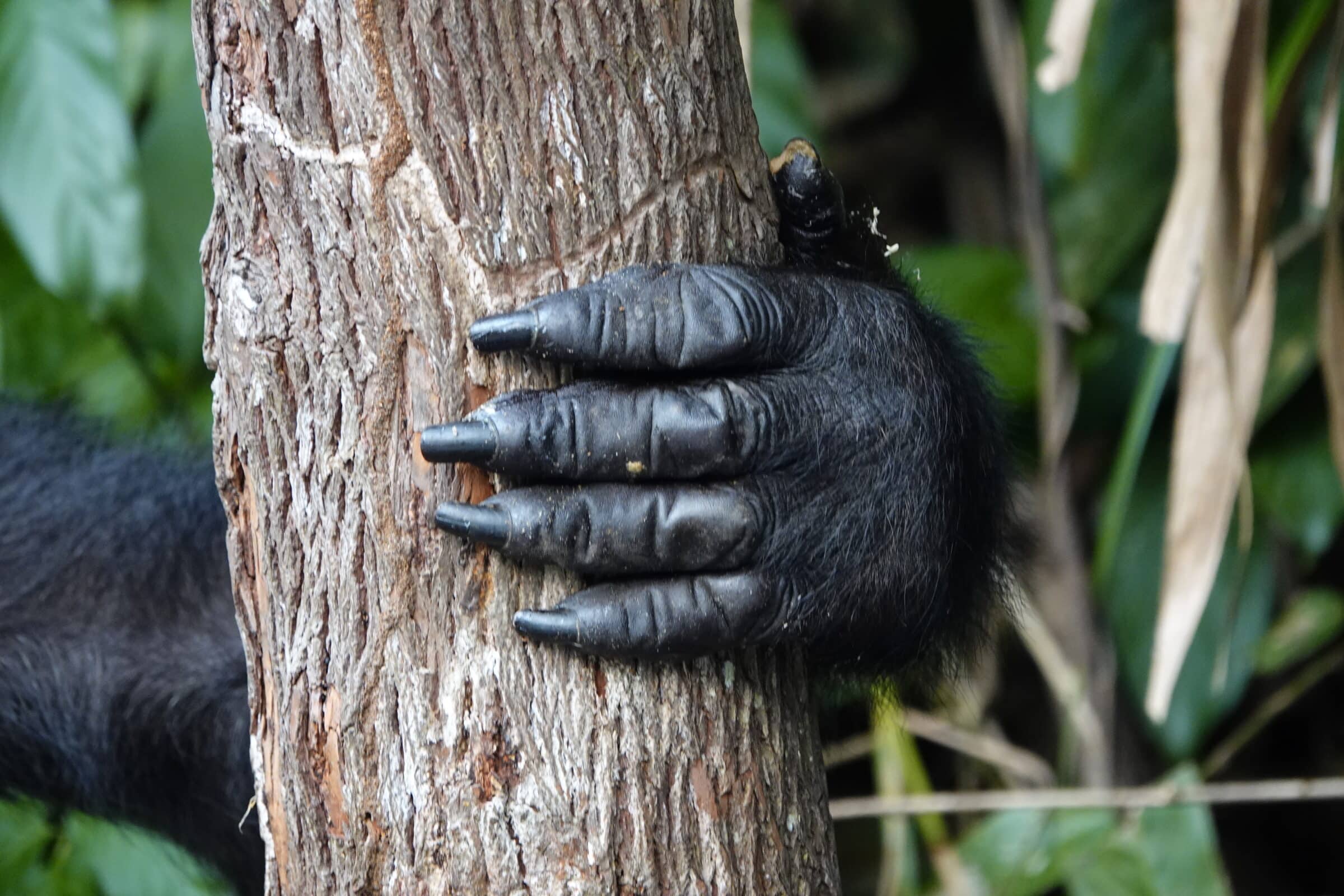
We are also amazed here. The youngest still climbs a tree, the eldest lives exclusively on the ground.
Also read: 24 Must Sees in Africa | The most beautiful places for your bucket list ✔
We spend about half an hour with the gorillas. Then back to the starting point with a spectacular journey through the jungle. An absolutely wonderful experience.
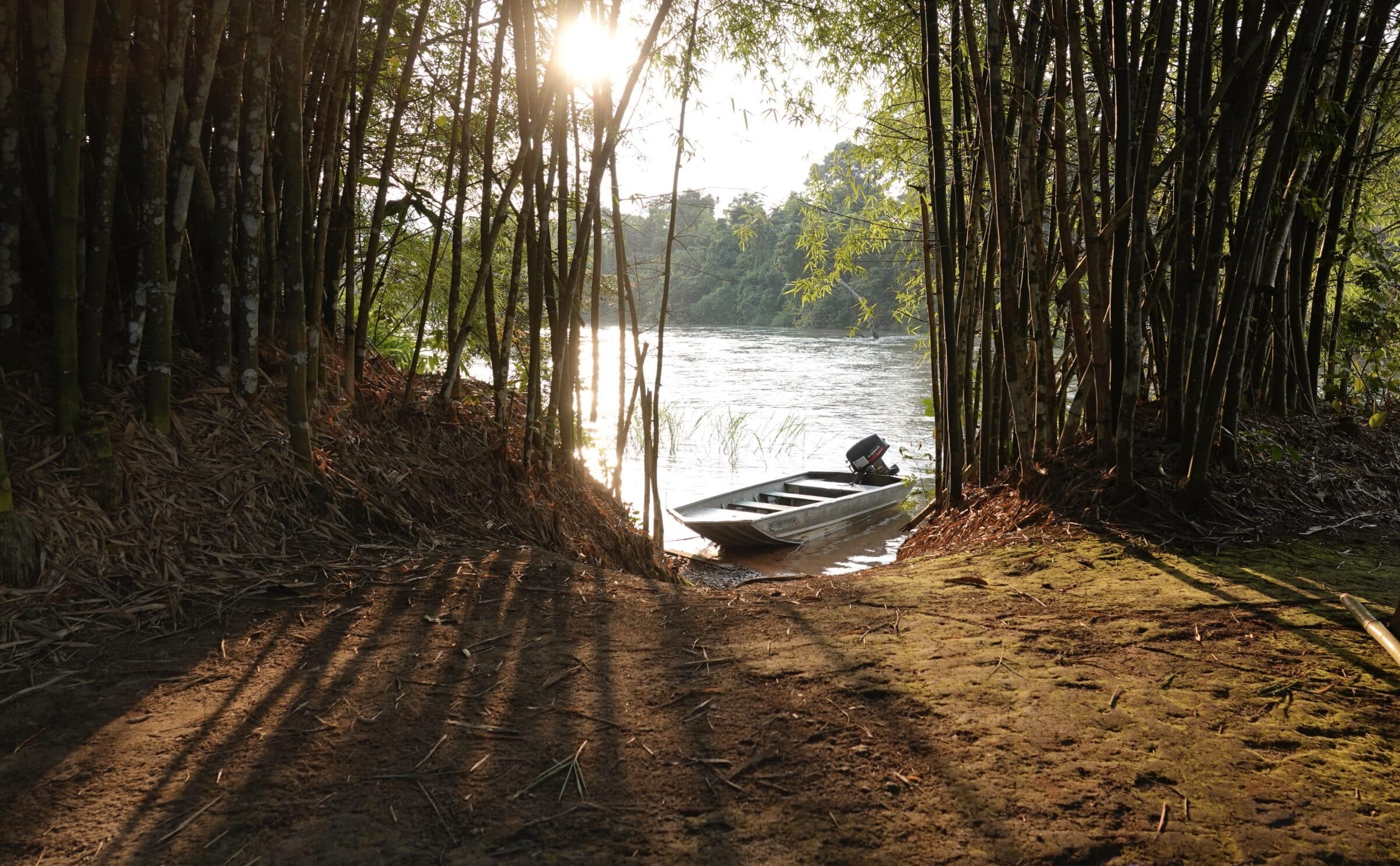
Just another morning
Norms, values and customs differ from person to person, from country to country and from continent to continent. Without judging, we often just describe what we see.
We spend the second night at a different location of the Lesio-Louna Wild Reserve. In the ranger's yard. The chatty man is friendly and permanently guards the entrance. His duties include managing the wooden barrier for a maximum of 10-20 visitors who mainly visit at the weekend. So he doesn't get tired. He lives in Brazzaville and is here in this remote place for a month. Then he is off for a week. A few kilometers further on there is a small settlement from where a young man comes to sweep the yard.
They start this at half past six in the morning, talking loud and clear in their own local language. The best place to sweep seems to be right around the camper…
Yes, and if you have no light at night, you go to bed early and get out early.
The yard is spick and span, which is very important to them. The sand has been swept! When we put the last bits of rubbish in a garbage bag, the ranger rushes over to check the contents. After he takes out several items for his own use, he throws the rest into a hole, at least two meters deep. Including plastic and other poorly digestible substances.
When we look at his well-shaped body, we suspect that he did not dig the hole himself and he will probably not close it again.
Then a slender young woman trudges past - up a slope - with a wheelbarrow filled with three large jerry cans of water, about 75 kilos. She collected rainwater from a basin to meet the family's daily needs. Every 100 meters she stops for a moment, takes a breath and continues happily. She doesn't have to go to the gym today!
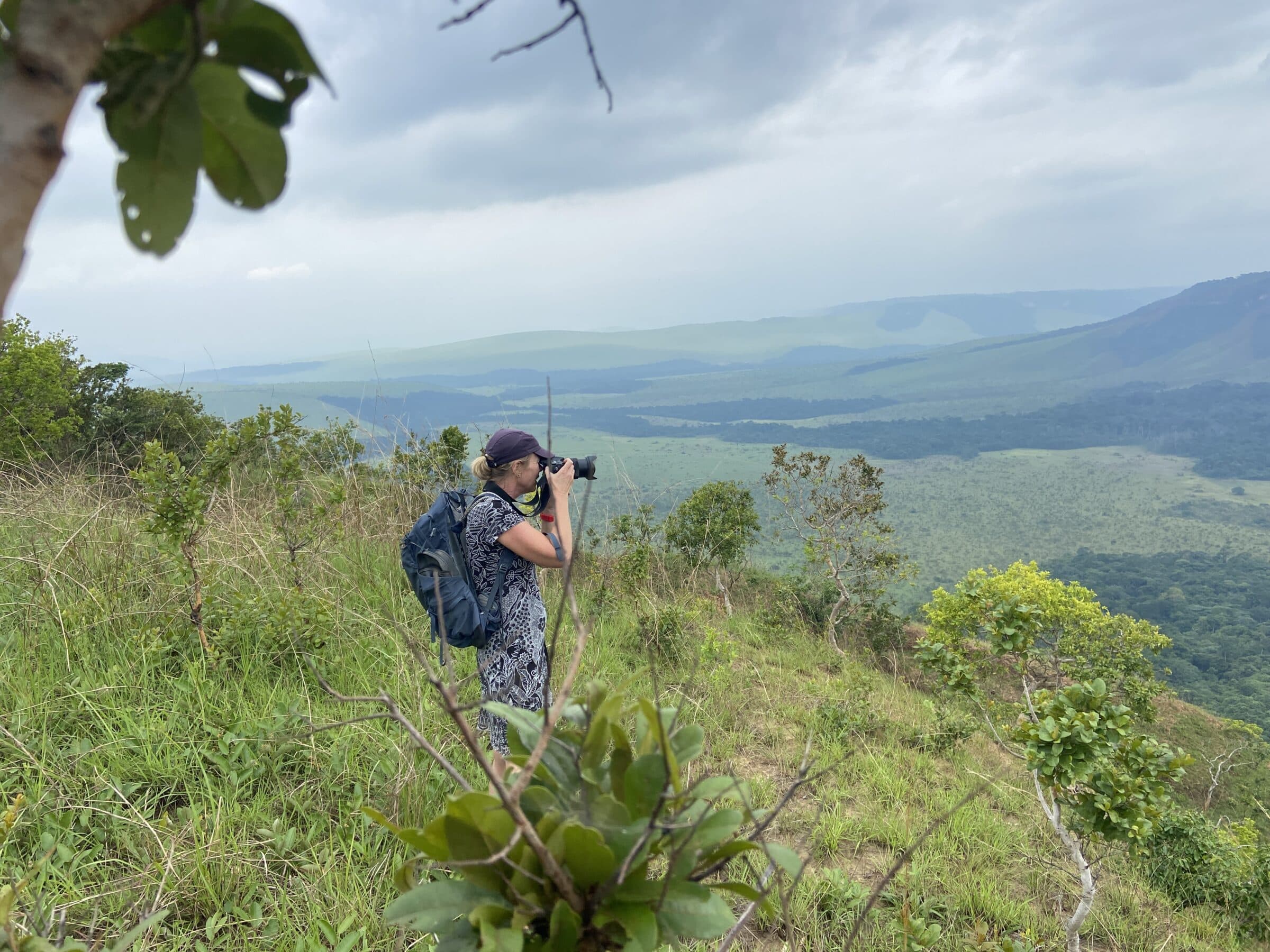
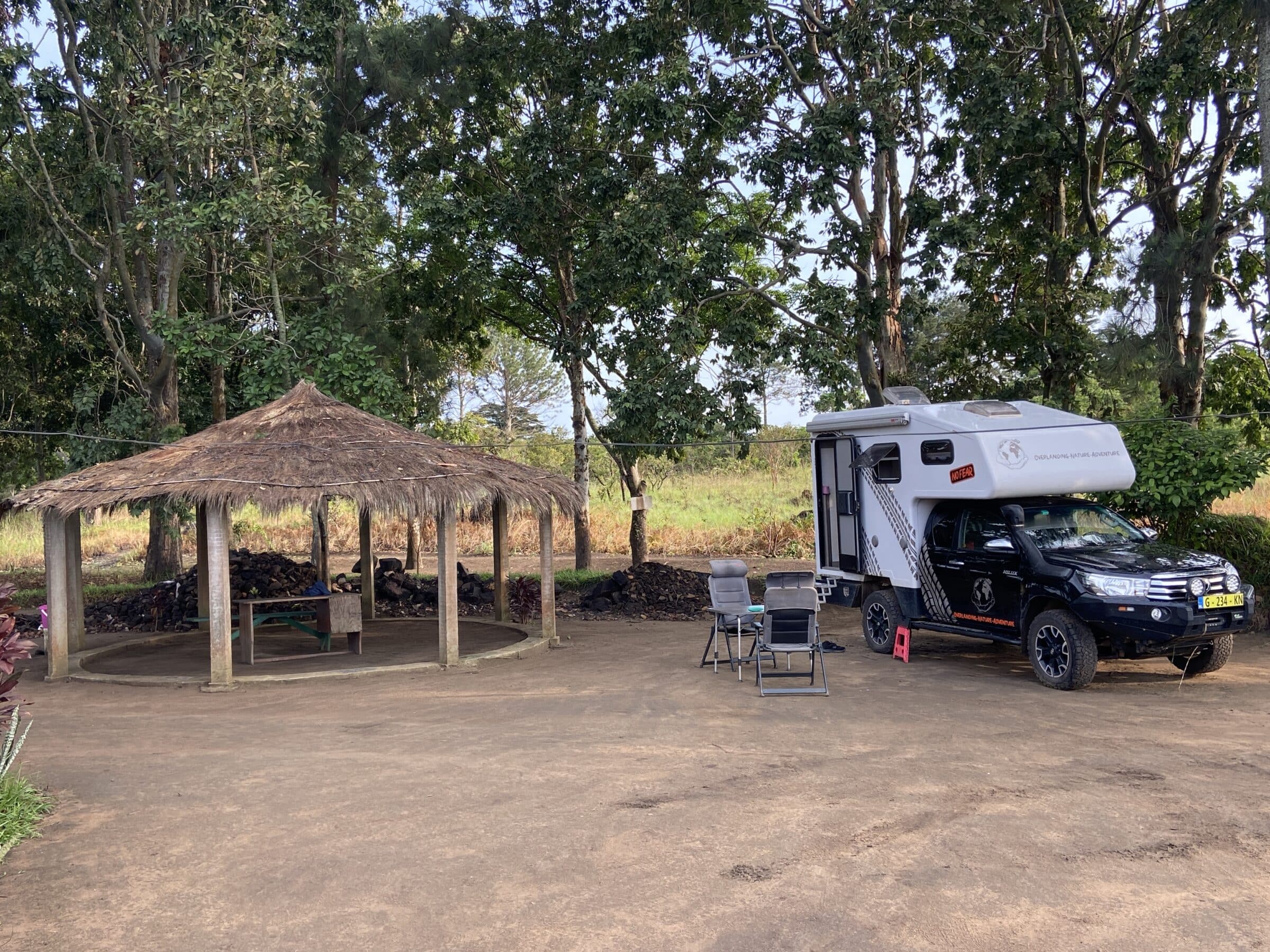
We leave the country via the most southwestern border crossing with the Angolan exclave of Cabinda.
Plan your holiday to Africa here
- Itineraries you can compare + request quotes Africaplus, Africa tailor-made, Djoser, king monkey, rickshaw travel, sawadee en shoestring.
- Flight tickets for Africa you book through Skyscanner.
- Hostels, Hotels and Resorts in Africa you book Booking.com.
- Rental cars : Sunnycars en rental cars.
- Tours and Activities in Africa you book through GetYourGuide.
- travel items such as suitcases, bags and more you can buy at Bol.com.
- SIM cards for Africa you buy extra International sim.
- Parking at the airport you can arrange via Parkos, park care of iParking.


